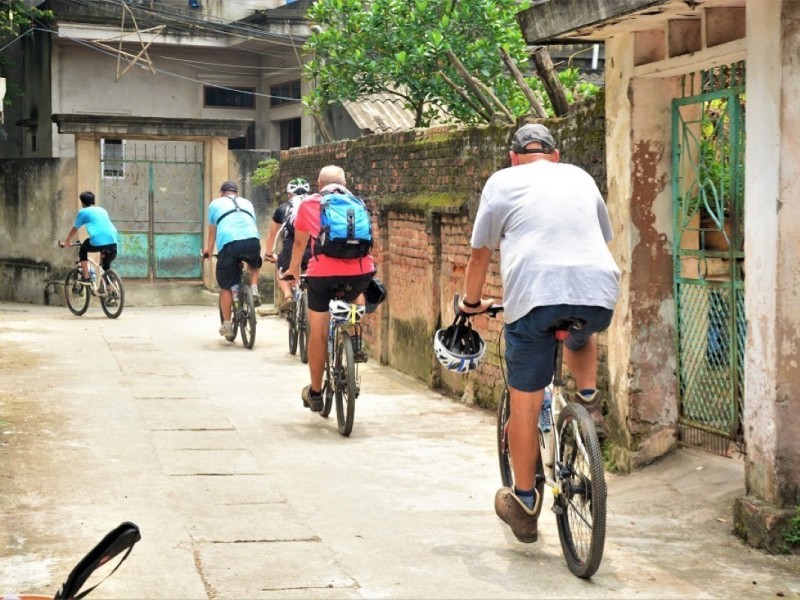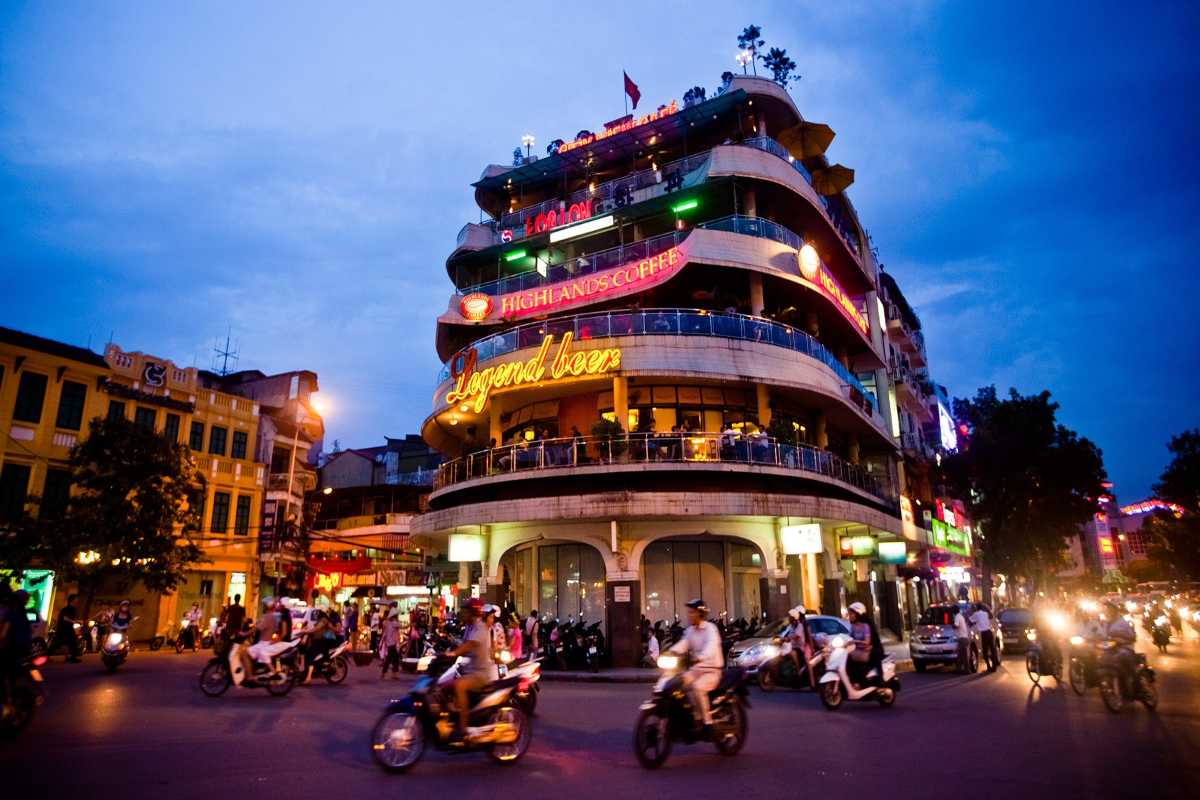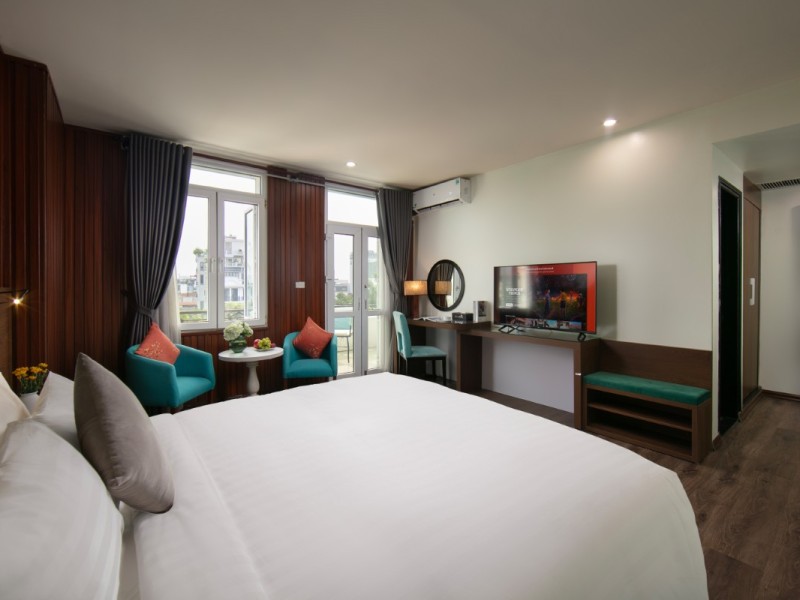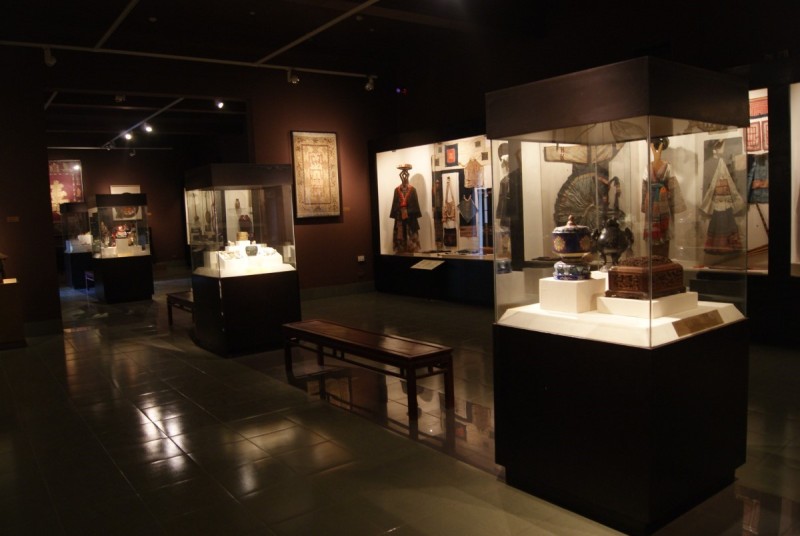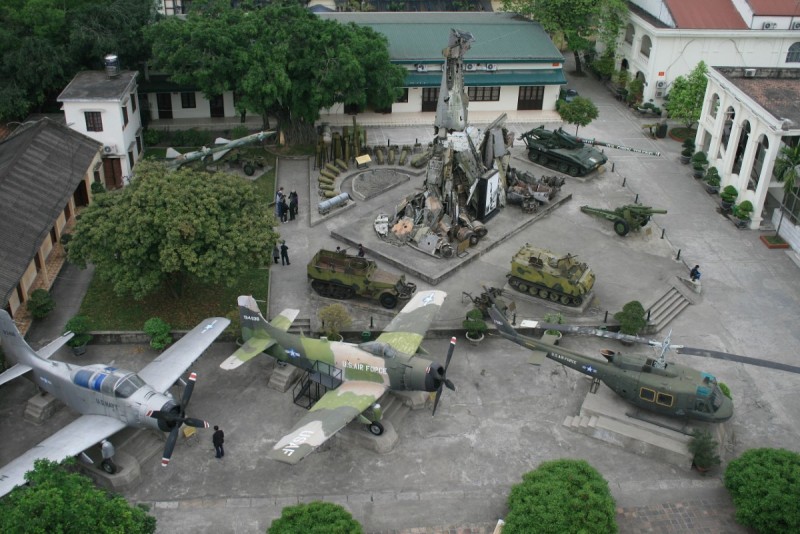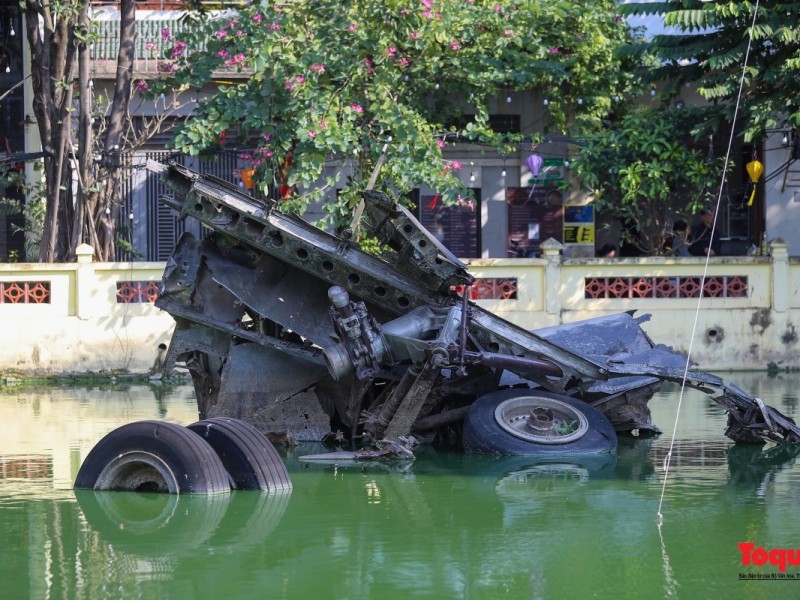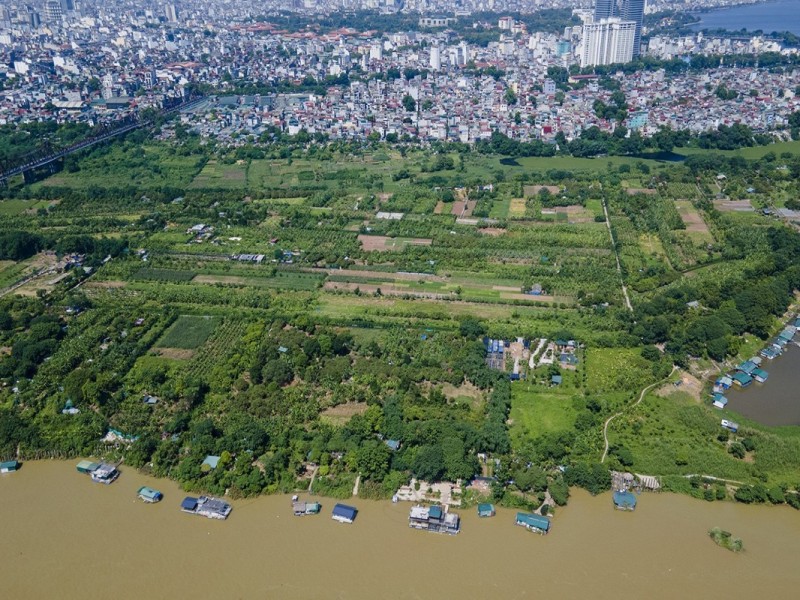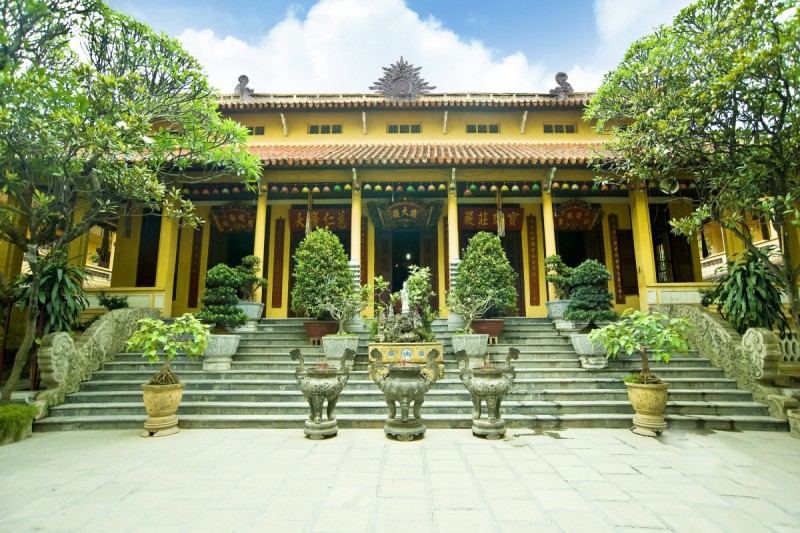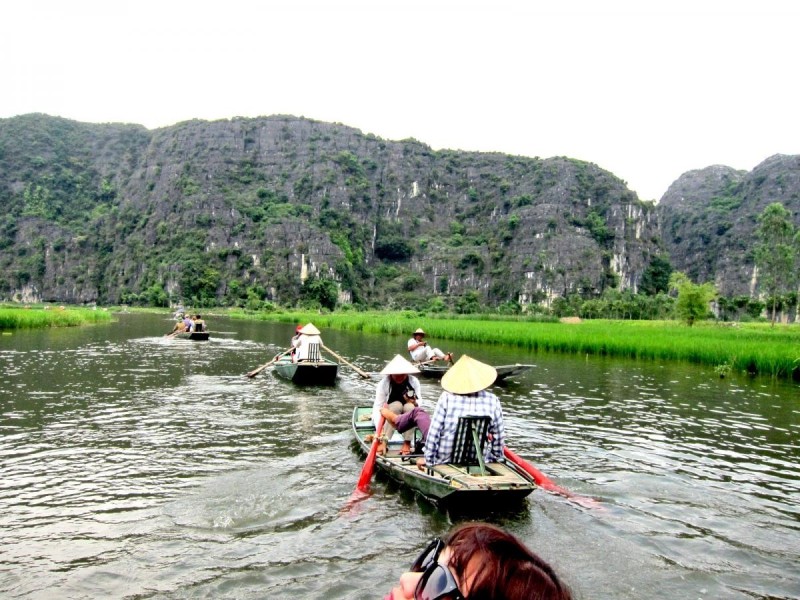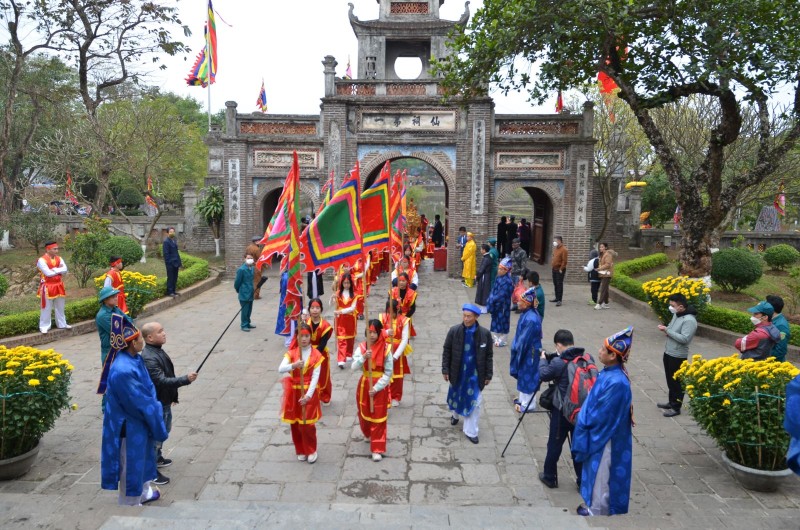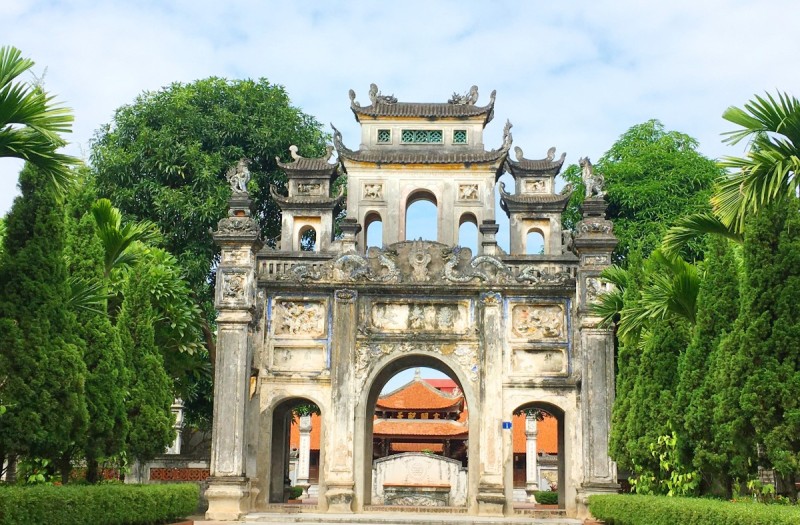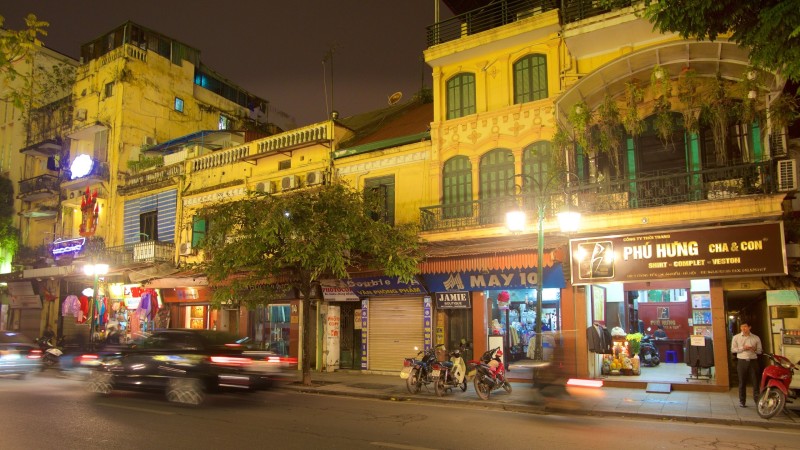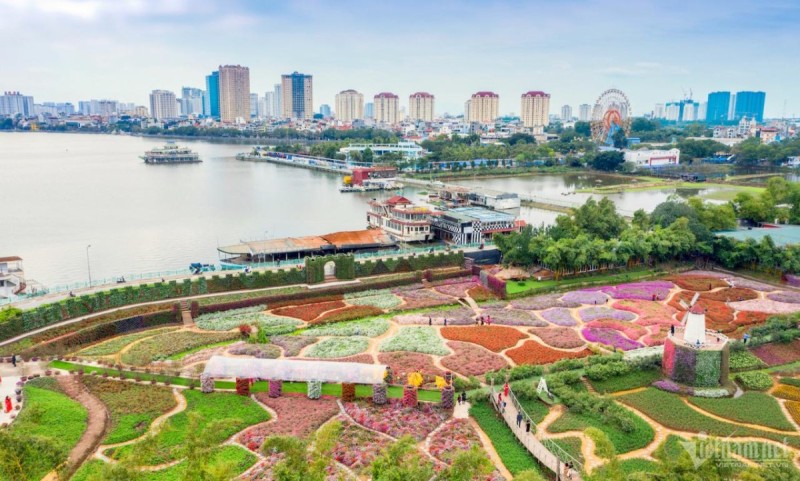Explore Hanoi Flag Tower: A Symbol of Resilience and History
The Hanoi Flag Tower stands as a historic symbol of Vietnam’s cultural heritage, offering visitors panoramic views of Hanoi from its unique spiral staircase and viewing platform. Located within the Thang Long Imperial Citadel, it provides insight into the city’s rich history and national pride.
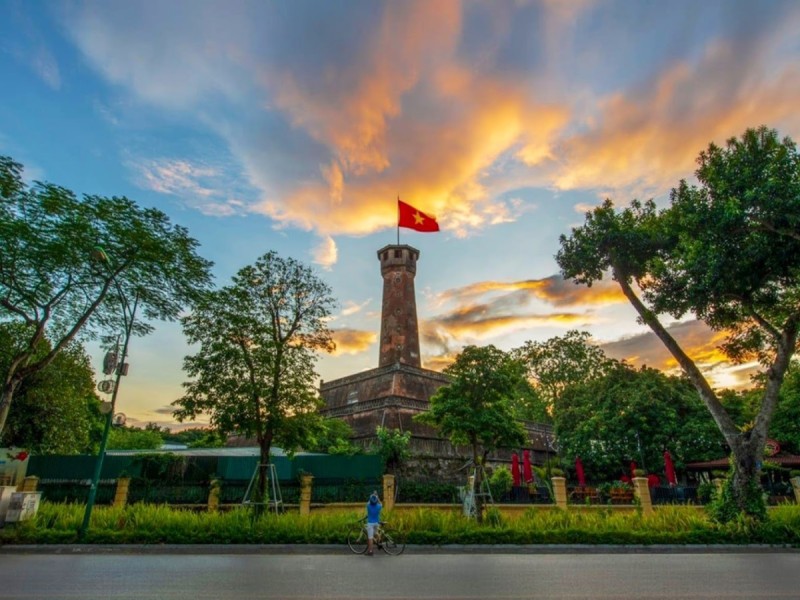
Introduction to Hanoi Flag Tower
The Hanoi Flag Tower stands as a proud symbol of Vietnam’s rich history and cultural heritage. Nestled within the heart of Hanoi, this iconic structure is part of the Thang Long Imperial Citadel, a UNESCO World Heritage Site that has witnessed centuries of the nation’s evolution. As one of the most recognizable landmarks in Vietnam’s capital, the Hanoi Flag Tower draws visitors eager to explore its historical significance and panoramic views. This article will guide you through everything you need to know, from its origins to visitor experiences, helping you appreciate why it remains a treasured national symbol.
Discover how the Hanoi Flag Tower combines architectural grandeur with deep cultural meaning. Whether you are a history enthusiast, a curious traveler, or someone looking to capture stunning views, this guide will prepare you for an unforgettable visit.
Plan your journey to the Hanoi Flag Tower and experience a unique blend of history and modern-day vibrancy.
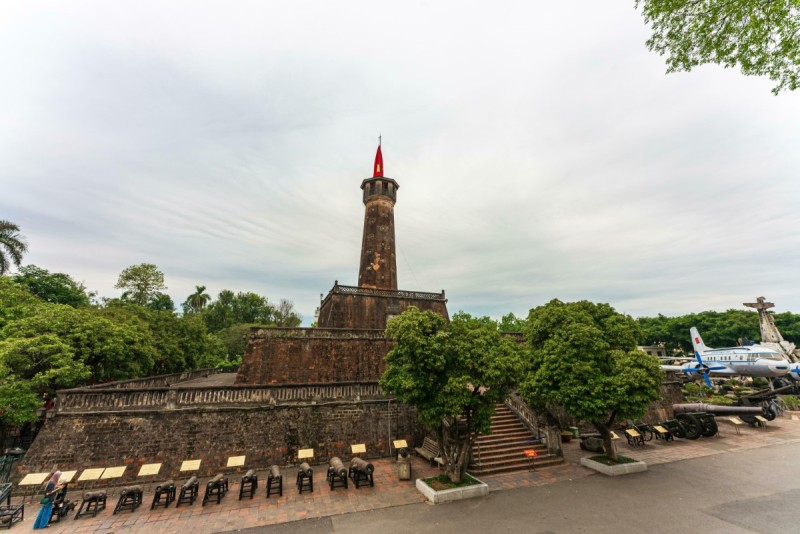
Overview of Hanoi Flag Tower
The Hanoi Flag Tower is an imposing historic structure that has stood tall since the early 19th century. It forms a central part of the Thang Long Imperial Citadel, reflecting the defensive strength and architectural prowess of the Nguyen Dynasty era. Known for its distinctive three-tiered design and the large national flag it proudly flies, the tower serves as a potent symbol of Vietnamese resilience and pride.
Visitors often describe the tower as a must-see Hanoi landmark that embodies both the city’s historic identity and its cultural spirit. Its commanding presence in the Ba Dinh District makes it a focal point for cultural ceremonies and a highlight on many tourist itineraries.
Explore the Hanoi Flag Tower to witness firsthand a site that has stood witness to pivotal moments in Vietnam’s history.
Location and prominence as a Hanoi landmark
The Hanoi Flag Tower occupies a significant place in the heart of Hanoi, serving as a defining feature of the city’s historic and cultural landscape. Understanding its location helps visitors appreciate its strategic and symbolic importance.
- Situated in the historic Ba Dinh District, the Hanoi Flag Tower is part of the ancient Thang Long Imperial Citadel.
- The tower is one of the tallest surviving structures from the citadel, visible from many parts of the city.
- Its prominent position underscores its former military role and its modern identity as a national symbol.
- It is conveniently located near other famous sites, including the Ho Chi Minh Mausoleum, making it accessible to tourists.
This location enhances the tower’s status as a must-see landmark during your visit to Hanoi.
Brief historical context and significance
To fully appreciate the Hanoi Flag Tower, it’s important to recognize its historical roots and evolving significance over time. This brief overview highlights its role in Vietnamese heritage.
- Constructed in 1812 under the Nguyen Dynasty, the tower initially served as a watchtower defending the Thang Long Imperial Citadel.
- It represents military strength and architectural skill from the early 19th century.
- Over time, it has become a potent symbol of Vietnam’s national pride and cultural identity.
- The large national flag it flies is a continual reminder of the country’s sovereignty and history.
Plan your visit to the Hanoi Flag Tower to experience a site where history and national pride converge.
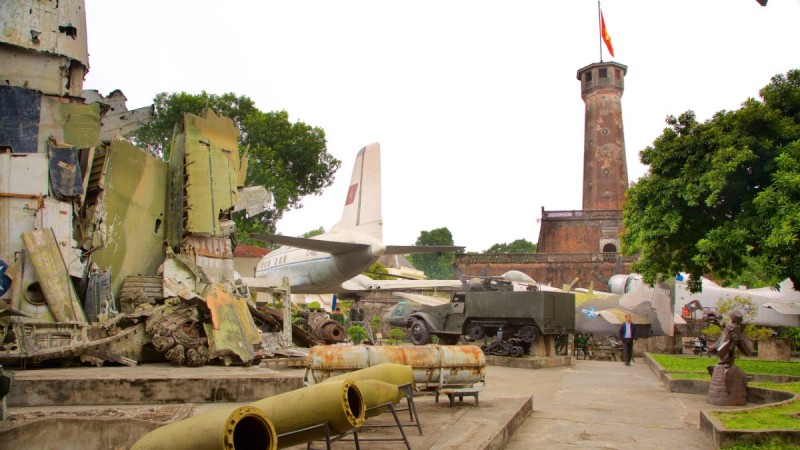
What Makes Hanoi Flag Tower Unique
The Hanoi Flag Tower stands out not only for its impressive architecture but also for its deep symbolic meaning in Vietnamese culture. Understanding these unique features helps visitors appreciate why it remains a powerful emblem of national identity and pride.
Explore the distinctive design elements and cultural significance that set the Hanoi Flag Tower apart from other landmarks in Hanoi.
Plan your visit to see these unique features up close and connect with the heritage they represent.
Architectural highlights and symbolic meaning
The Hanoi Flag Tower boasts several architectural features that symbolize its historic and cultural significance. These elements contribute to its status as a treasured landmark.
- Three-tiered structure: Represents the tower’s stability and grandeur.
- Height of 33.4 meters: One of the tallest ancient towers in Hanoi, dominating the skyline.
- Spiral staircase: A unique feature that leads visitors to the top viewing platform.
- Large flag: The prominent national flag symbolizes sovereignty and unity.
- Defensive design: Reflects its original purpose as a military watchtower within the Thang Long Imperial Citadel.
Together, these highlights create an iconic structure blending history and symbolism.
Discover these architectural wonders firsthand during your visit to the Hanoi Flag Tower.
Role as a national symbol and cultural icon
The Hanoi Flag Tower is more than a historic building; it is a revered national symbol representing Vietnam’s resilience and cultural heritage. It serves as a focal point during important flag ceremonies and patriotic events.
Its enduring presence reflects the spirit of the Vietnamese people and their dedication to preserving their history. The tower connects generations through its symbolic value and cultural identity.
Visiting the Hanoi Flag Tower offers a meaningful experience, allowing you to engage with Vietnam’s national pride.
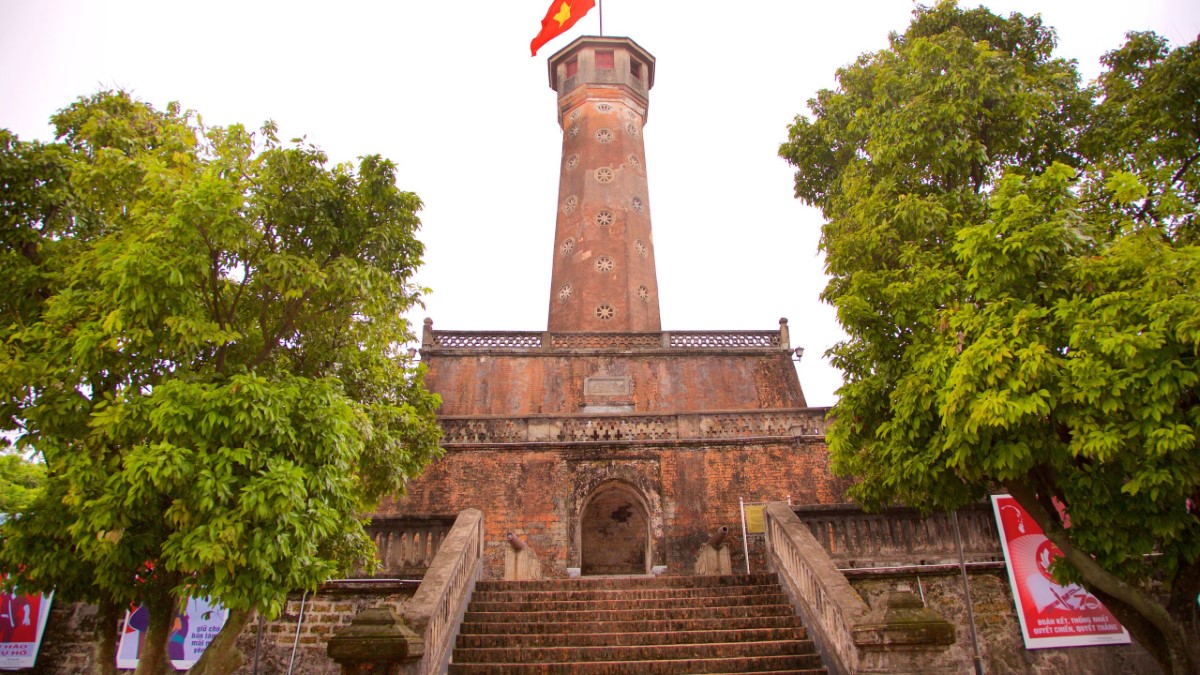
What Visitors Can Expect
Visiting the Hanoi Flag Tower offers a mix of historical exploration and cultural immersion. Beyond the tower itself, you’ll find a rich experience that connects you with Hanoi’s vibrant heritage and nearby attractions. Understanding what to expect helps you plan your visit more effectively and enjoy every moment.
Prepare to engage with fascinating architecture, panoramic views, and a lively cultural atmosphere.
Make sure to explore the surrounding heritage sites for a complete experience.
Summary of experiences available at the site
At the Hanoi Flag Tower, visitors can enjoy a variety of activities that showcase its historical and cultural importance:
- Climb the spiral staircase to reach the viewing platform for stunning panoramic views of Hanoi.
- Explore the architectural design and learn about the tower’s military past.
- Participate in or observe flag ceremonies that celebrate national pride.
- Take guided tours that provide rich historical and cultural insights.
- Capture memorable photographs in a unique heritage setting.
These experiences combine to offer a fulfilling visit to the Hanoi Flag Tower.
Plan your visit to include these enriching activities.
Connection to surrounding heritage and attractions
The Hanoi Flag Tower is ideally located near several important cultural and historical sites, allowing visitors to broaden their exploration:
- Thang Long Imperial Citadel: Discover the ancient citadel’s rich history adjacent to the tower.
- Hanoi Zoo: A family-friendly destination offering a chance to enjoy nature and wildlife.
- Hoa Lo Prison Museum: Learn about Vietnam’s complex history at this nearby museum.
- Various other heritage attractions within walking distance enrich the cultural experience.
Exploring these sites alongside the Hanoi Flag Tower makes for a comprehensive journey into Hanoi’s past and present.
Include these attractions in your itinerary for a well-rounded visit.
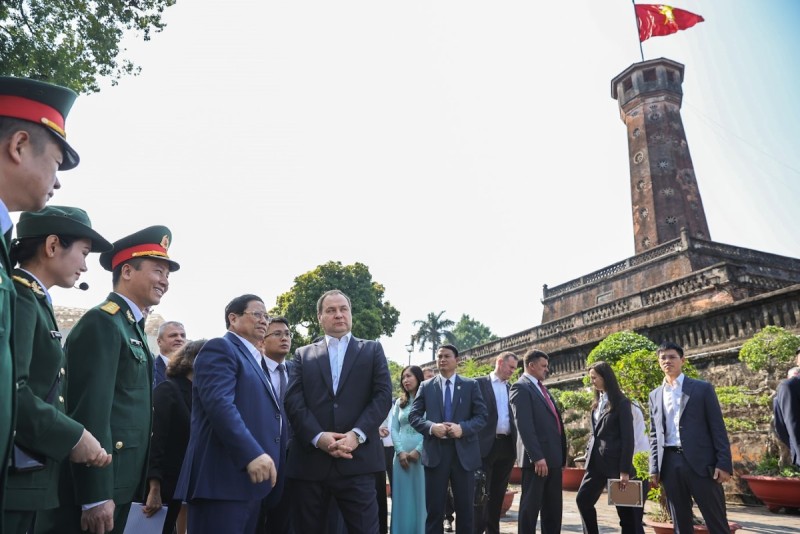
Historical Background of Hanoi Flag Tower
The Hanoi Flag Tower holds a significant place in Vietnam’s history, tracing back to its origins during the Nguyen Dynasty. Built as part of the defensive network of the Thang Long Imperial Citadel, this imposing structure has witnessed centuries of cultural and political change. Its architectural design reflects both military functionality and symbolic grandeur. Today, it stands as a proud testament to Vietnamese heritage, carefully preserved by the Vietnamese government and recognized by UNESCO for its cultural importance.
Discover the tower’s rich past, architectural highlights, and the role it has played in shaping national pride. Understanding its historical background enriches the experience of every visitor and highlights why it remains a treasured monument in Hanoi.
Plan your visit to the Hanoi Flag Tower to explore a key piece of Vietnam’s historical tapestry.
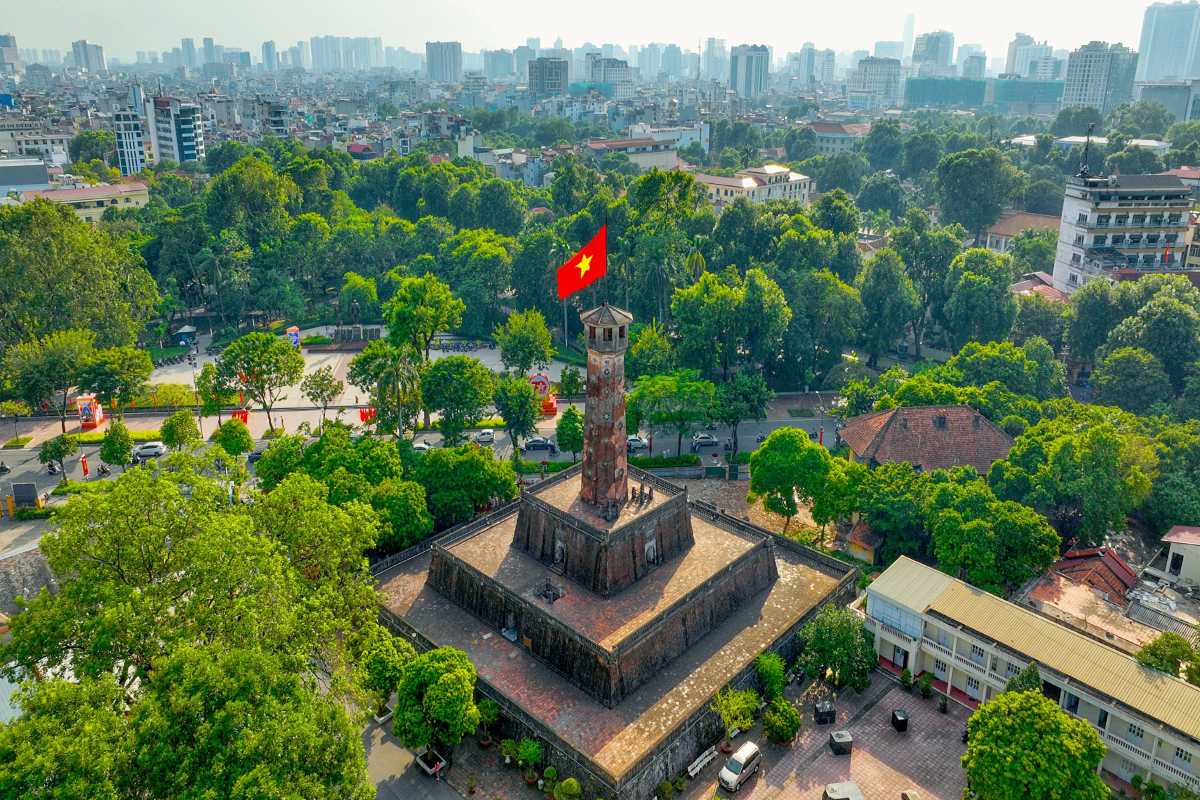
Origins and Construction
The Hanoi Flag Tower was constructed in 1812 during the reign of the Nguyen Dynasty. It originally served as a watchtower designed to strengthen the defenses of the Thang Long Imperial Citadel. This section outlines the key facts about its construction and the historical context that shaped its purpose.
Understanding the origins of the Hanoi Flag Tower gives valuable insight into its strategic and symbolic significance within Vietnam’s history.
Plan your exploration to include these foundational aspects of the tower’s story.
Year of construction and historical context (1812, Nguyen Dynasty)
This section highlights the specific year the Hanoi Flag Tower was built and places it within the political landscape of early 19th century Vietnam.
- Constructed in 1812 under the Nguyen Dynasty rule.
- Part of a broader effort to fortify the Thang Long Imperial Citadel against external threats.
- Reflects the architectural styles and military priorities of the era.
- Embodies the historical continuity of Vietnamese sovereignty during a turbulent period.
These details emphasize the tower’s foundational role in Vietnam’s history.
Include this context to deepen your understanding of the site.
Original purpose as part of Thang Long Imperial Citadel defense
The Hanoi Flag Tower was originally designed to function as a military watchtower, providing strategic surveillance and defense for the Thang Long Imperial Citadel. This role was crucial in protecting the seat of imperial governance.
- Served as a lookout point to monitor approaching enemies.
- Integrated into the citadel’s complex defensive system.
- Its height and position allowed for early warnings and communication.
- Played a vital role in the security and administration of the ancient capital.
Recognizing this military heritage adds depth to your visit.
Plan your tour to include insights into this strategic function.
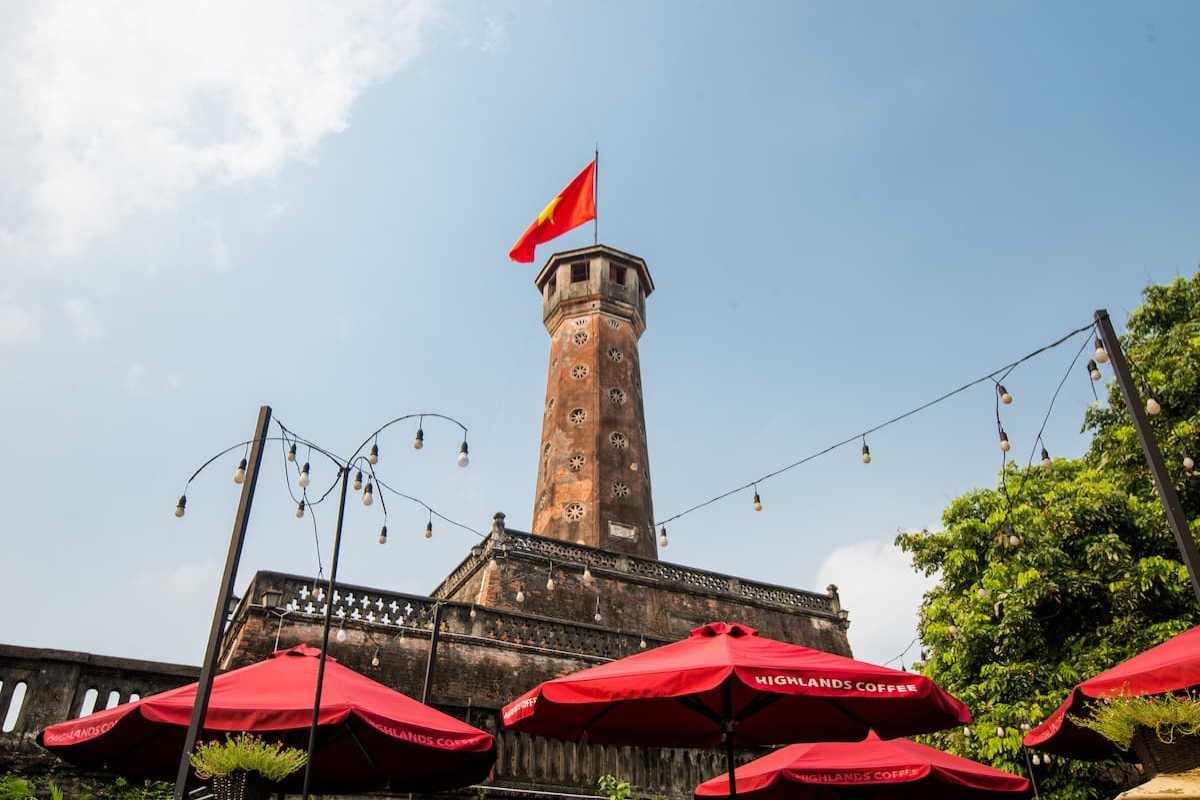
Architectural Features and Design
The Hanoi Flag Tower is renowned for its impressive architectural features, combining military functionality with symbolic grandeur. Understanding its structure and unique design elements allows visitors to fully appreciate the craftsmanship and historical purpose behind this landmark.
Explore the tower’s physical dimensions, intricate details, and what makes it stand out as an architectural icon in Hanoi.
Don’t miss the chance to experience these fascinating features during your visit.
Description of structure, height, and tiers
The tower’s impressive physical specifications highlight its dominance in the cityscape and its strategic design:
- Three tiers: The tower consists of three distinct levels, giving it a stepped appearance.
- Height of 33.4 meters: Making it one of the tallest historical towers in Hanoi.
- Strong masonry construction: Built to withstand time and serve defensive purposes.
- Rectangular base: Provides a stable foundation supporting the upper tiers.
- Viewing platform: Located at the top tier, offering panoramic views of the city.
These details showcase the tower’s architectural strength and visual impact.
Experience these remarkable features when you visit the Hanoi Flag Tower.
Unique elements such as spiral staircase and flag size
Several distinctive features set the Hanoi Flag Tower apart from other historical landmarks:
- Spiral staircase: A narrow, winding staircase that leads visitors up to the top platform.
- Large national flag: The flag atop the tower is one of the largest in Hanoi, symbolizing national pride.
- Defensive openings: Small windows and embrasures designed for observation and protection.
- Architectural uniqueness: The blend of military design with cultural symbolism is evident throughout.
- Historic inscriptions: Some sections feature carvings that tell stories of the tower’s past.
These unique elements contribute to the tower’s charm and significance.
Discover these architectural marvels firsthand during your visit to the Hanoi Flag Tower.
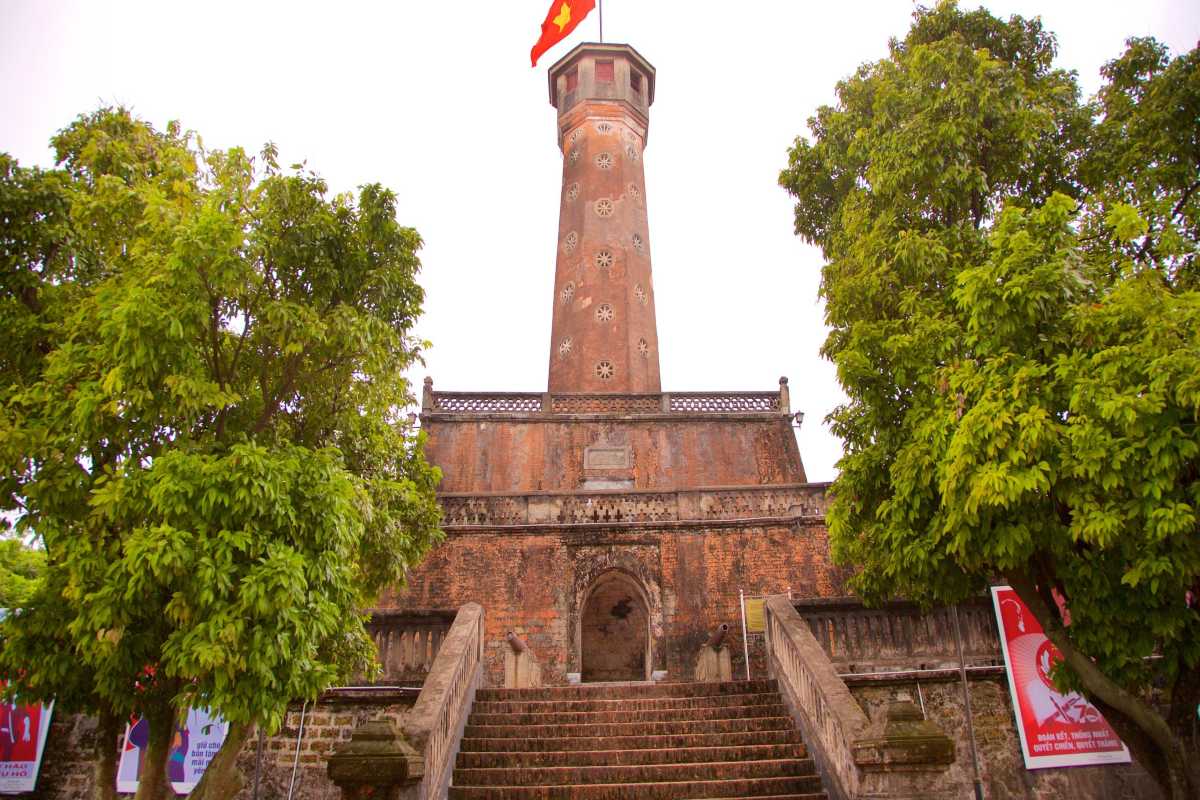
Role in Vietnamese History
The Hanoi Flag Tower has played a vital role throughout key historical periods in Vietnam, serving both practical and symbolic functions. From colonial times to wartime struggles, the tower stood as a beacon of resilience and national pride. Understanding its historical role provides deeper insight into the spirit and identity of the Vietnamese people.
Explore how this landmark has witnessed and embodied moments of cultural and political significance across centuries.
Plan your visit to connect with the rich history embedded in the Hanoi Flag Tower.
Importance during colonial and wartime periods
During colonial rule and wartime, the Hanoi Flag Tower served as a critical military and symbolic site. It functioned as a lookout to defend the city and became a symbol of resistance against foreign occupation.
- Used for surveillance and signaling during the French colonial era.
- Played a part in defense strategies throughout various conflicts.
- Became a rallying symbol for Vietnamese nationalists and freedom fighters.
- Its endurance reflects the tenacity of the Vietnamese people through hardship.
These historical contexts highlight the tower’s enduring significance.
Include this perspective to appreciate the tower’s role beyond architecture.
Symbolism of national pride and resilience
Beyond its military uses, the Hanoi Flag Tower symbolizes Vietnam’s national pride and cultural resilience. It stands as a testament to the enduring spirit of the country and its people.
- The prominent national flag flying atop represents unity and sovereignty.
- The tower’s survival through turbulent times inspires patriotism.
- It serves as a cultural icon celebrated in national ceremonies.
- Visitors often feel a strong emotional connection to this symbol of heritage.
This symbolism enriches the visitor experience, connecting history with contemporary identity.
Plan your visit to experience this powerful emblem of Vietnamese heritage.

Preservation and UNESCO Recognition
The Hanoi Flag Tower is officially part of the Thang Long Imperial Citadel UNESCO World Heritage Site, reflecting its outstanding cultural and historical value. Its inclusion on the UNESCO list highlights the global importance of preserving this iconic landmark for future generations. Understanding the tower’s conservation status fosters appreciation for the careful efforts undertaken by the Vietnamese government and international organizations.
Learn about the preservation initiatives that maintain the tower’s integrity and significance.
Plan your visit with respect for this protected heritage site.
Status as part of Thang Long Imperial Citadel UNESCO World Heritage Site
The Hanoi Flag Tower forms a crucial part of the Thang Long Imperial Citadel, which was designated a UNESCO World Heritage Site in recognition of its historical and architectural significance.
- The listing acknowledges the citadel’s role as a political and cultural center for over 13 centuries.
- The tower is one of the best-preserved structures within the complex.
- Its architecture and historical context contribute to the site’s outstanding universal value.
- This status ensures international cooperation and attention for ongoing preservation efforts.
Understanding this designation emphasizes the tower’s global cultural importance.
Include this context to enhance your appreciation of the site.
Restoration and conservation efforts by Vietnamese government and UNESCO
Continuous restoration and conservation projects have helped preserve the Hanoi Flag Tower as a symbol of national heritage.
- Regular structural maintenance ensures safety and longevity.
- Collaborative efforts between the Vietnamese government and UNESCO support cultural preservation.
- Restoration projects focus on maintaining original materials and architectural integrity.
- Public awareness campaigns promote respectful visitation and conservation values.
These initiatives demonstrate a strong commitment to safeguarding the tower for future visitors.
Plan your visit with mindfulness towards preservation efforts.
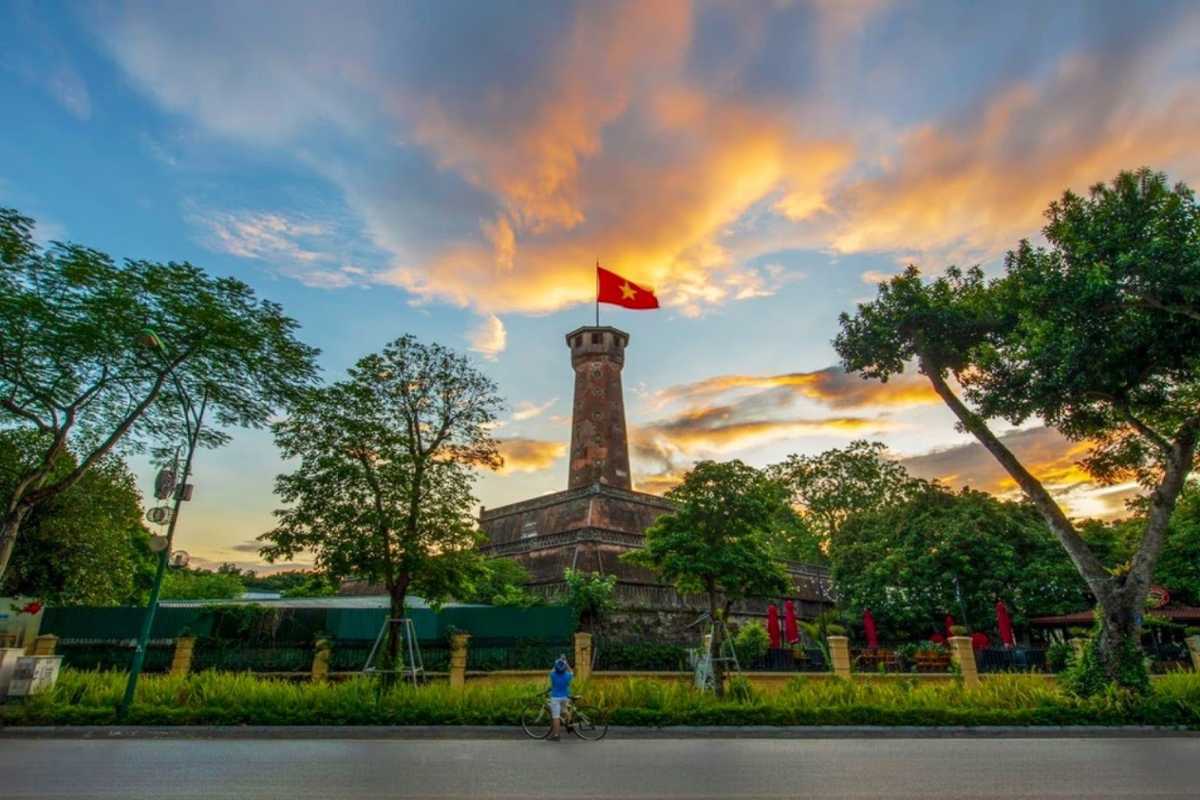
Cultural Significance and Heritage
The Hanoi Flag Tower holds deep cultural significance in Vietnamese society, symbolizing national pride and historical identity. Beyond its impressive architecture, the tower plays an active role in contemporary cultural life, hosting important ceremonies and serving as a lasting emblem of Hanoi’s heritage. This section explores how the tower’s symbolism connects the past with present-day traditions and community values.
Discover why the Hanoi Flag Tower remains a vital cultural icon, resonating strongly with locals and visitors alike.
Include the cultural significance of this landmark to enrich your understanding of Vietnamese heritage.
Plan your visit to experience this living symbol of national pride.
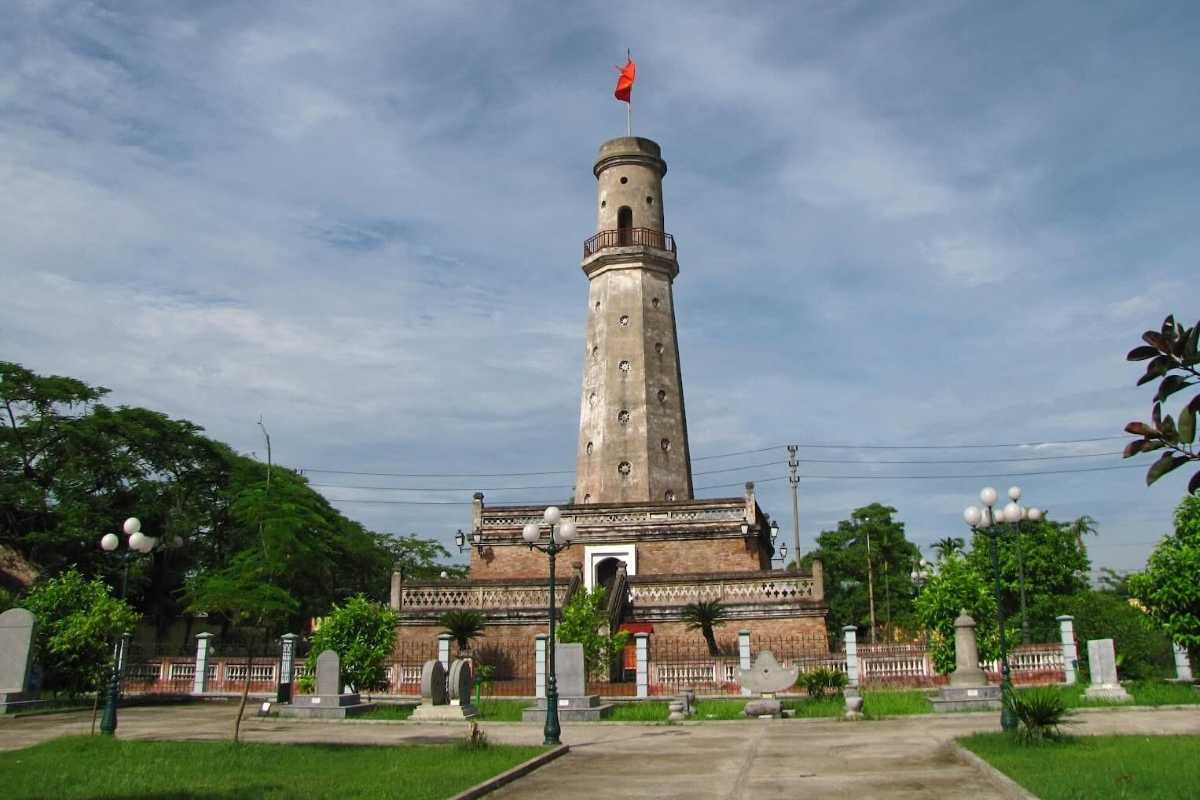
Symbolism of the Flag Tower in Vietnamese Culture
The Hanoi Flag Tower symbolizes the enduring spirit and cultural identity of Vietnam. It is closely tied to national pride and is a central venue for flag ceremonies that unite communities and celebrate patriotism.
This section highlights the tower’s role as a cultural icon and its significance during important national events.
Experience the cultural heartbeat of Hanoi through the tower’s symbolic presence.
National flag ceremonies and patriotic events
The Hanoi Flag Tower regularly hosts significant national ceremonies that honor Vietnamese heritage and unity:
- Flag-raising on National Day, marking patriotic celebrations.
- Commemorations during major holidays, including Tet Festival.
- Events promoting national pride and cultural awareness.
- Gatherings that foster community spirit and respect for history.
These ceremonies showcase the tower’s living role in Vietnamese culture.
Include these events in your visit to witness meaningful cultural expressions.
The tower as a representation of Hanoi’s historical identity
The Hanoi Flag Tower stands as a powerful emblem of Hanoi’s historic identity, symbolizing the city’s rich past and enduring cultural legacy.
- Represents Hanoi’s role as the ancient capital and cultural heart of Vietnam.
- Reflects centuries of resilience, governance, and tradition.
- Acts as a visual reminder of the city’s imperial and revolutionary history.
- Celebrated in local stories, art, and collective memory.
Understanding this connection deepens appreciation of the tower’s significance.
Plan to explore how the tower embodies the spirit of Hanoi.
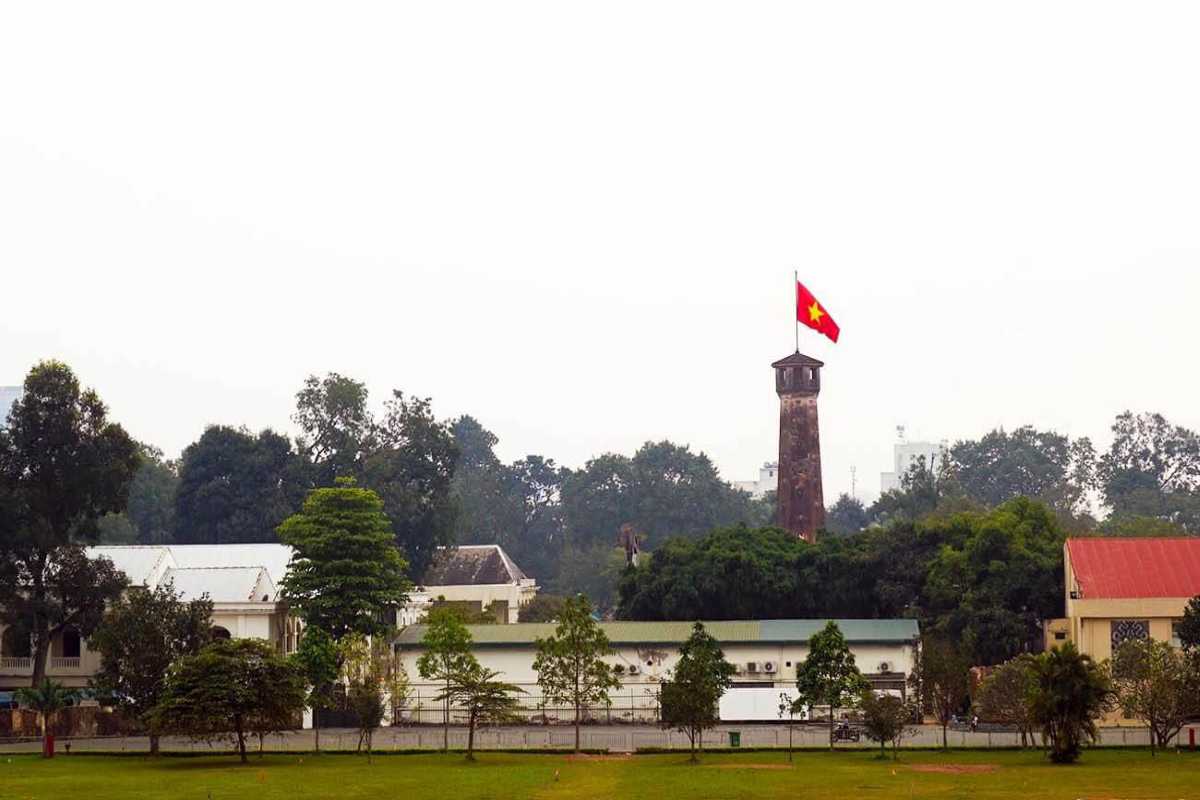
Connection to Thang Long Imperial Citadel
The Hanoi Flag Tower holds a significant place within the Thang Long Imperial Citadel, reflecting centuries of imperial governance and historical importance. This section explores the deep ties between the tower and the broader heritage site, showing how it fits into Vietnam’s rich political and cultural narrative.
Discover how the tower’s role within the citadel enhances its historical weight and cultural value.
Plan your visit with an understanding of this vital connection.
Historical ties with the ancient citadel and imperial governance
The Hanoi Flag Tower was integral to the political and defensive structure of the Thang Long Imperial Citadel, which served as the seat of imperial power for centuries.
- The tower provided surveillance to protect the citadel and its rulers.
- It symbolized authority and governance within the ancient capital.
- Its strategic location enabled communication and control over surrounding areas.
- The citadel complex represented the administrative heart of imperial Vietnam.
Understanding these ties enriches the historical context of the tower.
Include this perspective to appreciate the political significance during your visit.
Relationship with surrounding heritage sites
The Hanoi Flag Tower is surrounded by an array of important cultural landmarks that together form a rich heritage landscape in the Ba Dinh District.
- Thang Long Imperial Citadel: The historic complex housing the tower.
- Ho Chi Minh Mausoleum: Nearby national monument of great significance.
- One Pillar Pagoda: A symbol of Hanoi’s spiritual history.
- Presidential Palace: Colonial-era architecture reflecting Vietnam’s past.
- Museums and gardens enriching the cultural experience in the area.
These sites complement the tower’s historical narrative and offer visitors a comprehensive cultural itinerary.
Plan to explore these landmarks for a well-rounded heritage tour.
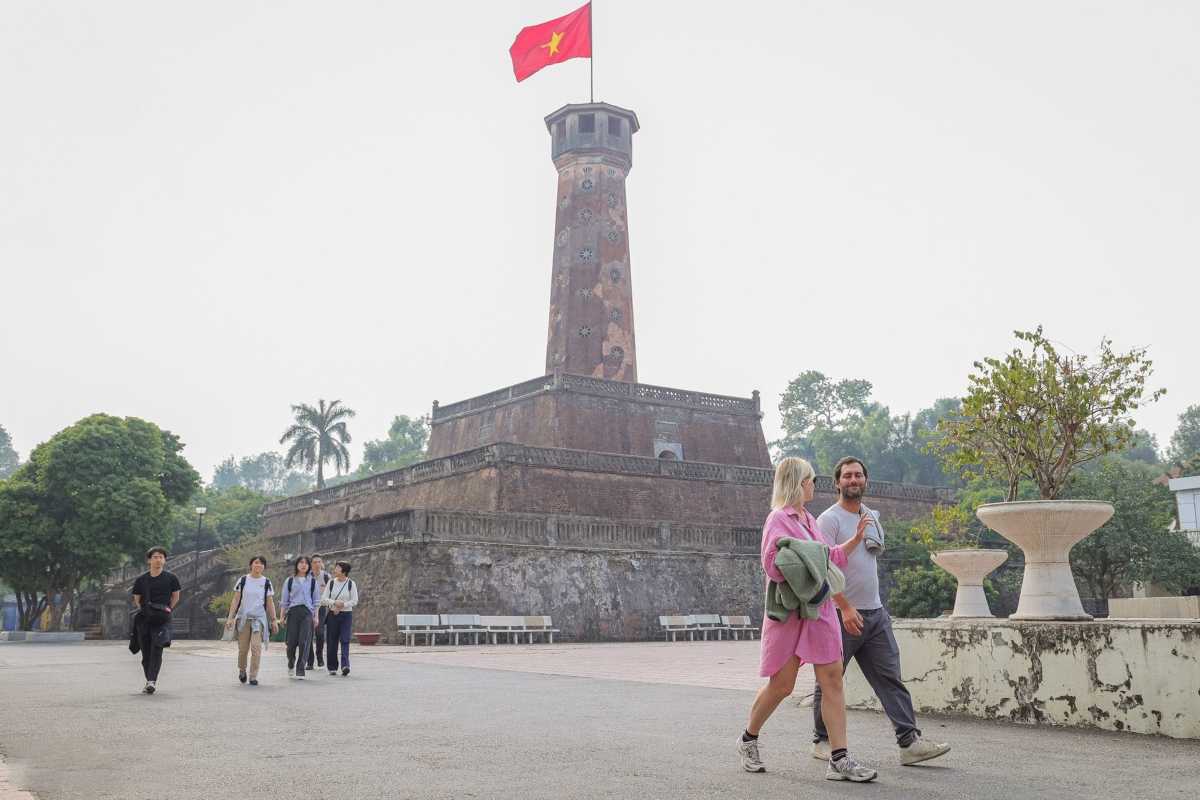
Contemporary Cultural Activities
The Hanoi Flag Tower continues to be a vibrant cultural hub, hosting a variety of festivals and educational programs that celebrate Vietnamese heritage. Visitors can engage with living traditions and deepen their understanding of the tower’s significance through guided tours and special events.
Explore the modern experiences that bring the tower’s history to life and offer meaningful connections to Hanoi’s culture.
Plan your visit to coincide with these enriching cultural activities.
Festivals and national holiday celebrations held at or near the tower
The Hanoi Flag Tower is a focal point for several important cultural festivals and national holidays, reflecting its ongoing role in community life:
- Celebrations on National Day, featuring flag-raising and patriotic events.
- Tet Festival activities honoring the lunar new year with cultural performances.
- Events marking UNESCO Heritage Day to promote awareness of cultural preservation.
- Traditional ceremonies that showcase Vietnamese customs and history.
These festivals provide a unique opportunity to experience local traditions in a historic setting.
Include these events in your travel plans for an authentic cultural experience.
Educational programs and guided heritage tours
For visitors seeking deeper knowledge, the Hanoi Flag Tower offers various educational programs and guided tours that highlight its historical and cultural significance:
- Guided tours focusing on the tower’s architecture and role in Vietnamese history.
- Heritage education programs for students and cultural enthusiasts.
- Themed tours that connect the tower with surrounding heritage sites.
- Interactive experiences designed to engage visitors of all ages.
These programs enhance understanding and appreciation of the tower’s place in Hanoi’s cultural landscape.
Plan to participate in these offerings for a more enriching visit.
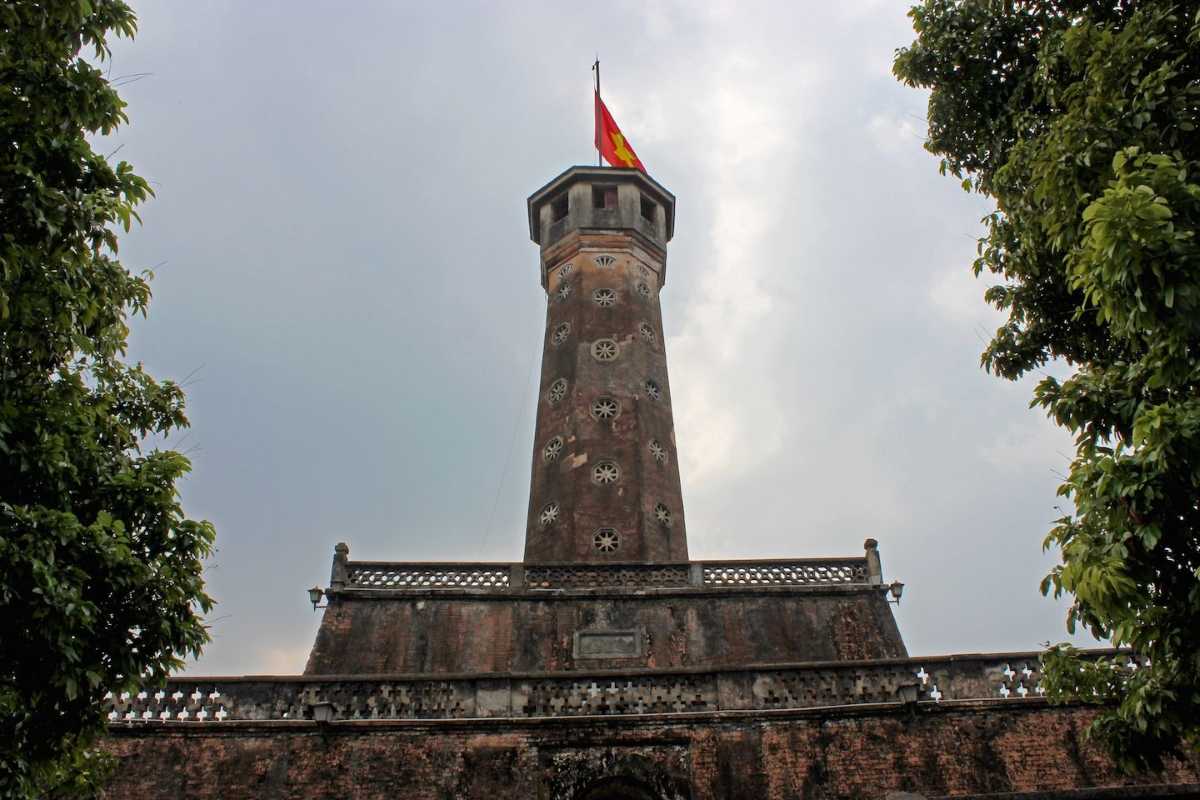
Visitor Guide and Practical Information
The Hanoi Flag Tower welcomes visitors with a blend of historical grandeur and convenient access. To make your visit smooth and enjoyable, this guide provides essential information on location, transportation options, admission details, facilities, and safety guidelines. Whether you are planning your first visit or returning for a deeper exploration, knowing these practical details will help you navigate the site confidently.
Prepare for your trip with clear, actionable advice to maximize your experience at this iconic landmark in Hanoi.
Plan your visit to the Hanoi Flag Tower with all the essential information at your fingertips.

Location and Accessibility
Finding the Hanoi Flag Tower is straightforward thanks to its prominent location within the Ba Dinh District. This section outlines precise location details and multiple transport options, helping you choose the most convenient way to reach this historic site.
Understand how to navigate the city efficiently to include the tower in your itinerary without hassle.
Enjoy seamless access to the Hanoi Flag Tower with these helpful tips.
Full address and geographic context within Ba Dinh District, Hanoi
Knowing the exact location of the Hanoi Flag Tower helps visitors orient themselves and plan their route effectively.
- Address: Located in the historic Ba Dinh District, central Hanoi.
- Positioned within the Thang Long Imperial Citadel complex.
- Close to major landmarks such as the Ho Chi Minh Mausoleum.
- Accessible from the city center with clear signage and pathways.
This geographic context makes visiting the tower convenient and enjoyable.
Use this information to locate the Hanoi Flag Tower with ease.
Transportation options: public buses, taxis, walking routes, cycling
Visitors can reach the Hanoi Flag Tower via various transportation modes suited to different preferences and budgets.
- Public buses: Several routes pass through Ba Dinh District with stops near the citadel.
- Taxis and ride-hailing: Widely available throughout Hanoi for direct access.
- Walking: Suitable for those staying nearby or exploring other central attractions.
- Cycling: Popular and scenic, with designated bike paths around the district.
Choosing the best transport depends on your schedule and travel style.
Plan your route accordingly to reach the Hanoi Flag Tower comfortably.
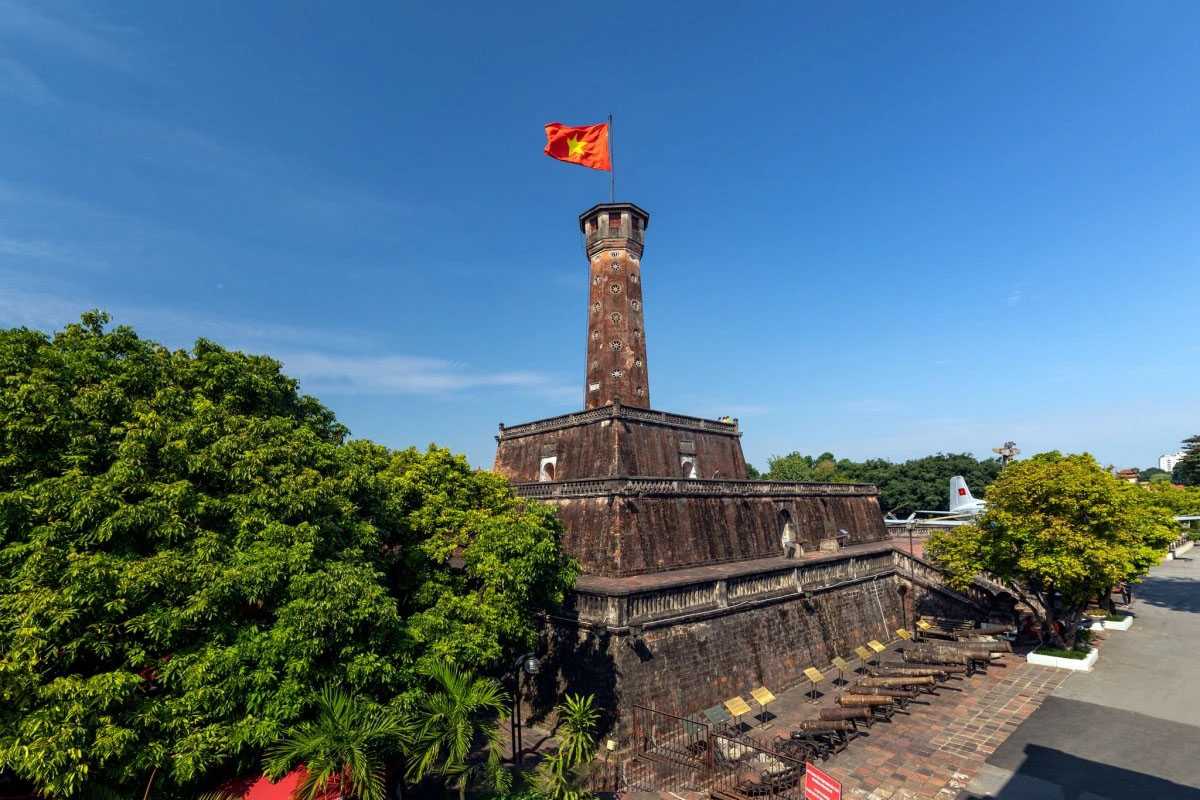
Entry and Opening Hours
Understanding the admission policies and best visiting times for the Hanoi Flag Tower helps you plan your visit effectively. This section provides clear information on ticket prices, opening hours, and tips to avoid crowds and enjoy the site comfortably.
Prepare your budget and schedule to make the most of your visit to this historic landmark.
Plan ahead to experience the Hanoi Flag Tower at its best.
Admission fees and free access details
Visitors can enjoy the Hanoi Flag Tower with affordable or free access options:
- Entrance to the tower is generally free for all visitors.
- Some surrounding museums within the Thang Long Imperial Citadel complex may charge a small fee.
- Free admission days may be available during national holidays or special events.
- No advance ticket booking is typically required, allowing flexible visits.
Knowing the fee structure helps you budget your trip accurately.
Take advantage of free access opportunities to explore more.
Best visiting hours and seasonal considerations
Choosing the right time to visit the Hanoi Flag Tower enhances your experience significantly:
- Early mornings on weekdays are the least crowded and offer cooler temperatures.
- The dry season from October to April is ideal for comfortable weather and clear views.
- Avoiding peak tourist seasons helps you enjoy the site peacefully.
- Seasonal festivals may add cultural richness but also increase visitor numbers.
These tips will help you enjoy the Hanoi Flag Tower to its fullest.
Plan your visit according to weather and crowd patterns for an optimal experience.
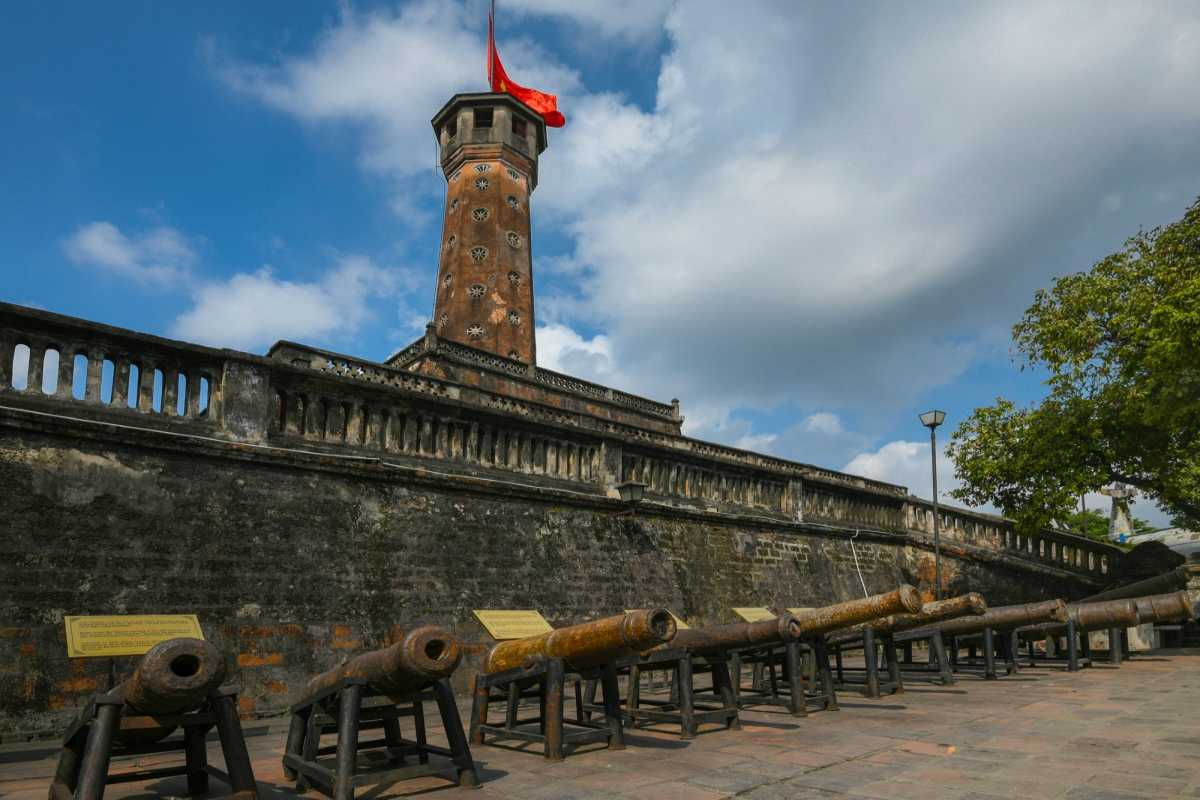
Facilities and Visitor Services
The Hanoi Flag Tower and its surrounding area provide several visitor facilities designed to ensure a comfortable and enjoyable experience. This section highlights the amenities available nearby, helping you prepare for your visit with convenience in mind.
Learn about the services and comforts you can expect to find when exploring the tower.
Plan your visit with these helpful amenities in mind for a smooth experience.
Nearby amenities such as restrooms, cafes, and souvenir shops
Visitors to the Hanoi Flag Tower can access a range of convenient amenities in the immediate vicinity:
- Public restrooms: Available near the entrance for visitor comfort.
- Cafes and small eateries: Offering refreshments and light snacks within walking distance.
- Souvenir shops: Selling traditional crafts and memorabilia related to the tower and Hanoi.
- Seating areas and shaded spots: Providing places to rest during your visit.
- Information kiosks: Offering guidance and maps for exploring the heritage site.
These facilities enhance your visit and provide practical support.
Consider these amenities to make your experience more pleasant.
Accessibility considerations for disabled visitors
The Hanoi Flag Tower strives to be accessible to all visitors, though some limitations exist due to its historic nature.
- Entrance paths are generally flat and manageable for wheelchair users.
- The spiral staircase to the viewing platform is not wheelchair accessible.
- Assistance is available upon request for visitors with mobility challenges.
- Visitors are encouraged to contact site management ahead of their visit for specific support.
- Nearby facilities include accessible restrooms and parking spaces.
Understanding these considerations helps visitors plan accordingly and ensures a respectful visit.
Prepare for your visit by reviewing accessibility options and arranging assistance if needed.
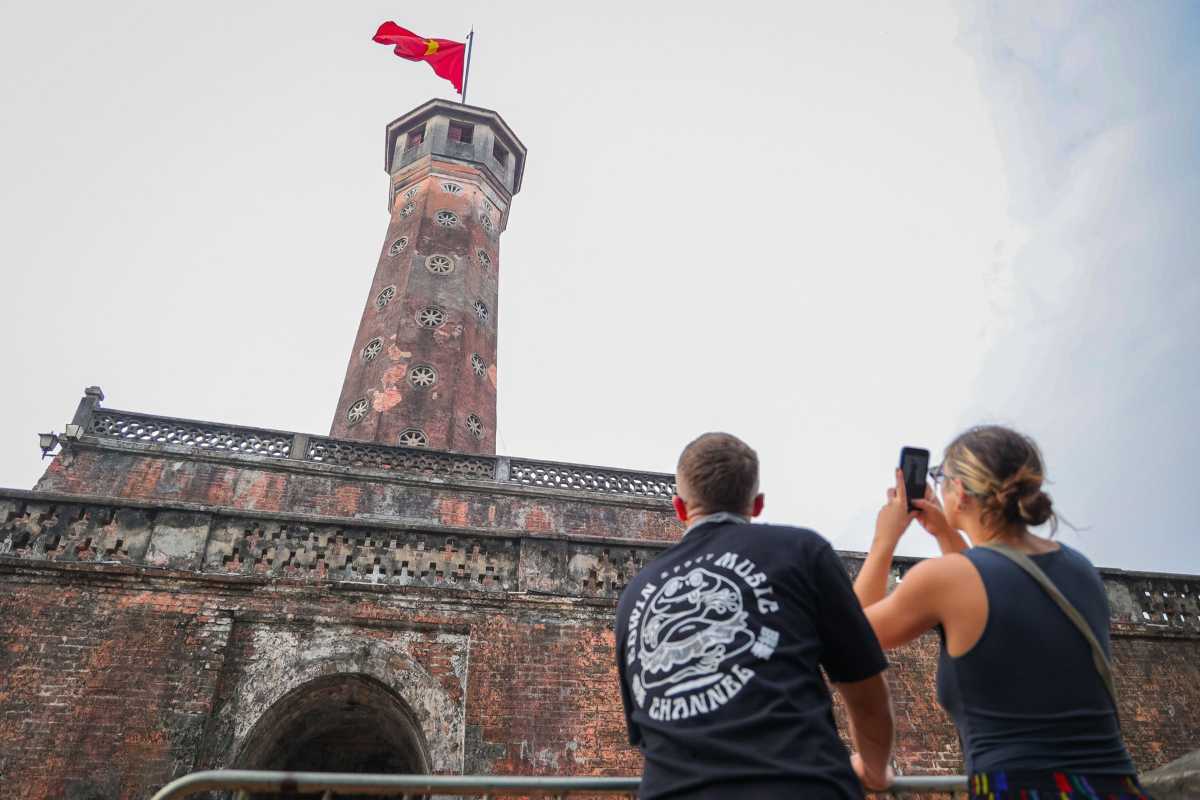
Safety and Visitor Guidelines
Ensuring safety and respecting cultural norms are essential when visiting the Hanoi Flag Tower. This section provides clear rules and guidelines to help protect both visitors and this historic site. Following these recommendations will enhance your experience and preserve the tower’s legacy for future generations.
Stay informed to enjoy a safe and respectful visit to this important landmark.
Plan your visit with these essential guidelines in mind.
Rules for climbing the tower and preservation notices
Visitors climbing the Hanoi Flag Tower should adhere to the following rules to ensure safety and protect the site:
- Climbing is only permitted on the designated spiral staircase.
- Do not touch or damage the historic structure or flag.
- Photography is allowed but avoid obstructing other visitors.
- Follow all posted signs and instructions from staff.
- Maintain cleanliness and avoid littering within the premises.
These guidelines help preserve the tower’s condition and ensure visitor safety.
Respect these rules for a responsible and enjoyable experience.
Recommended visitor behavior and cultural respect tips
Respectful behavior enhances your visit and honors the cultural significance of the Hanoi Flag Tower:
- Dress modestly and appropriately for a heritage site.
- Speak quietly and avoid disruptive actions.
- Refrain from touching artifacts or historical elements.
- Participate respectfully in flag ceremonies if attending.
- Support local cultural initiatives and conservation efforts.
Practicing cultural respect fosters a positive atmosphere for all visitors.
Embrace these tips to deepen your connection with Vietnamese heritage.

Climbing the Tower and Panoramic Views
Climbing the Hanoi Flag Tower offers visitors a unique chance to enjoy breathtaking panoramic views of Hanoi’s skyline and surrounding historic sites. The experience combines physical activity with rewarding vistas that captivate photographers and history enthusiasts alike.
Learn about the climb’s features and discover ideal spots for capturing memorable photos.
Prepare for an engaging visit that blends sightseeing with cultural exploration.
Plan your climb to take full advantage of the tower’s spectacular views.
Details on the spiral staircase and viewing platform
The ascent of the Hanoi Flag Tower is characterized by distinctive architectural elements:
- Spiral staircase: A narrow, winding path guiding visitors upward.
- Viewing platform: Located at the top, offering unobstructed city views.
- Safety features: Handrails and well-maintained steps ensure visitor security.
- Architectural details: The structure blends functional design with historical aesthetics.
- Accessibility note: The climb requires moderate physical effort.
Understanding these details helps visitors prepare mentally and physically.
Expect a climb that combines heritage with stunning scenery.
Photo opportunities and ideal times for photography
The Hanoi Flag Tower provides excellent photo opportunities, especially during specific times of day:
- Golden hour (early morning and late afternoon) offers soft, warm lighting.
- Clear days reveal expansive views of Hanoi’s skyline and historic districts.
- Capture the large national flag waving prominently against the sky.
- Use the viewing platform’s angles for creative compositions.
- Weekdays tend to be less crowded, allowing unobstructed shots.
Maximize your photography experience by timing your visit well.
Bring your camera and be ready to capture iconic moments.
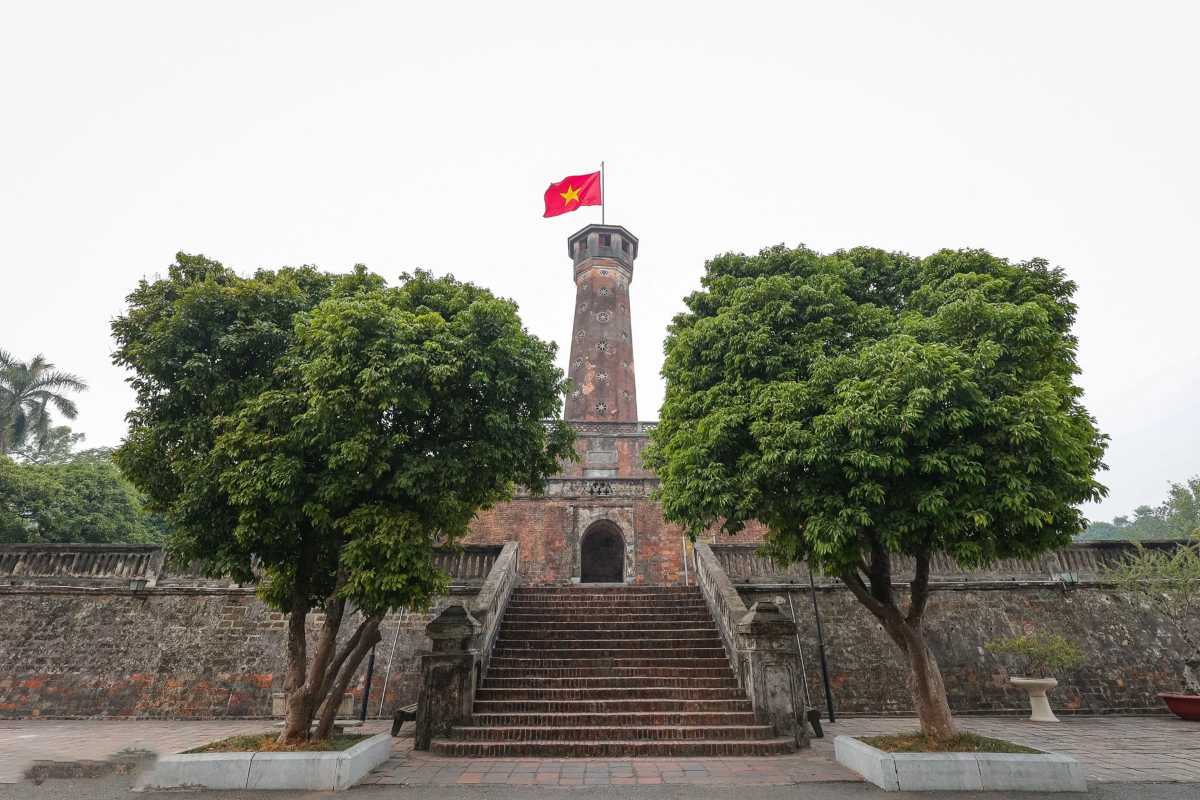
Guided Tours and Educational Experiences
Visitors to the Hanoi Flag Tower can choose from a variety of guided tours designed to deepen their understanding of the site’s rich history and cultural significance. These tours cater to diverse interests and offer expert insights into the tower’s architecture and heritage.
Explore options that fit your schedule and preferences for a more enriching experience.
Select the best guided tour to enhance your visit to the Hanoi Flag Tower.
Types of tours available (group, private, themed)
Several tour formats are available at the Hanoi Flag Tower to accommodate different visitor needs:
- Group tours: Cost-effective and social, ideal for meeting other travelers.
- Private tours: Personalized experiences tailored to individual interests and pace.
- Themed cultural tours: Focus on specific aspects such as architecture, history, or cultural traditions.
- Family-friendly tours: Designed to engage all ages with interactive learning.
- Combined heritage tours: Include nearby sites for a comprehensive cultural day.
Choose a tour format that aligns with your interests and budget.
Booking a guided tour enhances your understanding of the Hanoi Flag Tower and its context.
Content focus: history, architecture, cultural insights
Guided tours at the Hanoi Flag Tower provide rich educational content covering key themes:
- History: Learn about the tower’s origins, role in imperial defense, and significance in Vietnam’s past.
- Architecture: Discover details about its design, construction techniques, and symbolic elements.
- Cultural insights: Understand the tower’s place in Hanoi’s cultural identity and national pride.
- Interactive elements: Some tours include storytelling, artifacts, and multimedia presentations.
- Connections: Tours often highlight the tower’s relationship with the Thang Long Imperial Citadel and nearby heritage sites.
These educational themes deepen visitor engagement and appreciation.
Choose a tour to gain meaningful insights during your visit.
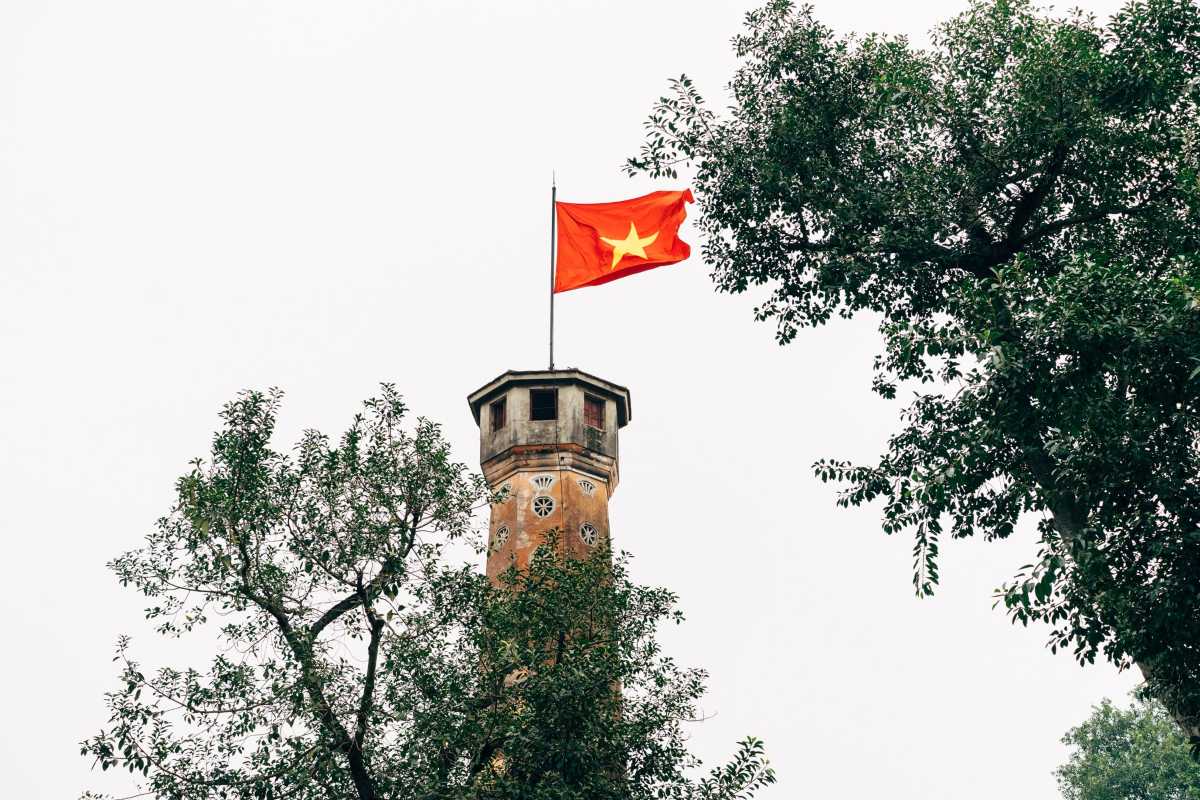
Nearby Attractions and Combined Visits
The Hanoi Flag Tower is surrounded by several compelling cultural and recreational sites that make for enriching combined visits. Exploring these nearby attractions allows you to maximize your time and experience more of Hanoi’s rich heritage.
Plan your itinerary to include these notable sites for a well-rounded travel experience.
Discover the best attractions near the Hanoi Flag Tower to enhance your visit.
Thang Long Imperial Citadel Museum
Located close to the tower, the Thang Long Imperial Citadel Museum offers deep insights into the political and cultural history of Hanoi and Vietnam.
- Exhibits include artifacts from various dynasties that ruled the region.
- Displays detail the architecture and layout of the ancient citadel.
- Visitors can learn about the tower’s role within this historic complex.
- The museum provides educational programs and guided tours.
Visiting this museum complements the tower experience by enriching historical understanding.
Include the Thang Long Imperial Citadel Museum in your itinerary for cultural depth.
Hanoi Zoo and Botanical Gardens
A short distance from the Hanoi Flag Tower, the Hanoi Zoo and Botanical Gardens offer family-friendly outdoor recreation and educational opportunities.
- The zoo features a diverse collection of animals native to Vietnam and beyond.
- Botanical gardens provide peaceful green spaces with varied plant species.
- Ideal for visitors seeking a relaxing break between cultural visits.
- Regular educational events engage visitors of all ages.
Combine your historical tour with a nature outing at the Hanoi Zoo and Botanical Gardens.
Enjoy a well-rounded day exploring both heritage and wildlife.
Hoa Lo Prison Museum and other nearby cultural sites
The Hoa Lo Prison Museum, often called the "Hanoi Hilton," is another significant cultural site near the Hanoi Flag Tower that offers a sobering glimpse into Vietnam’s modern history.
- The museum presents exhibits on colonial imprisonment and the Vietnam War.
- Displays include historical documents, photographs, and artifacts.
- It provides a reflective experience complementing the ancient heritage sites.
- Other nearby cultural sites enrich the historical fabric of the area.
Including the Hoa Lo Prison Museum in your visit offers a broader perspective on Vietnam’s complex past.
Plan to explore these cultural landmarks for a comprehensive Hanoi itinerary.
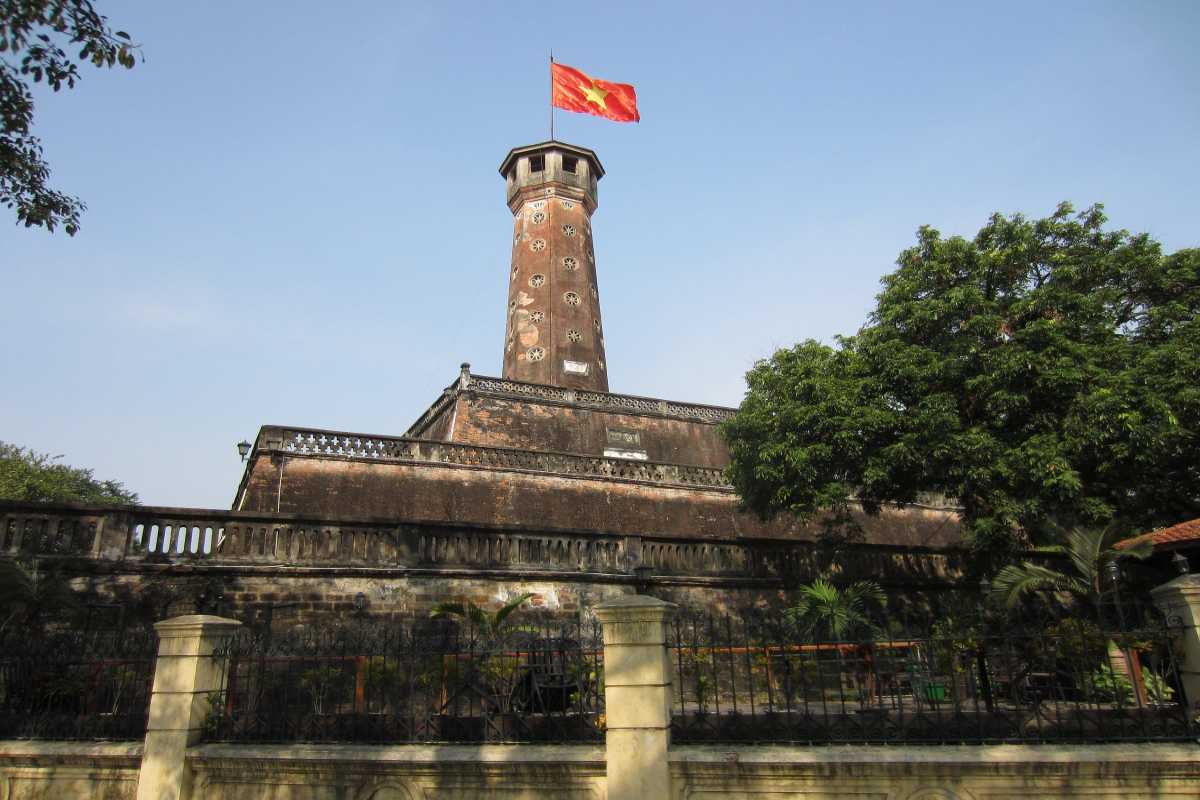
Seasonal and Special Events
Annual and special events at the Hanoi Flag Tower provide visitors with vibrant cultural experiences that deepen their connection to Vietnamese heritage. Planning your visit around these occasions can offer unique insights and memorable moments.
Discover key celebrations and plan your trip to coincide with these culturally rich events.
Experience the Hanoi Flag Tower beyond its historic architecture through these festive occasions.
National Day flag-raising ceremonies
The National Day celebrations at the Hanoi Flag Tower are marked by grand flag-raising ceremonies that evoke national pride.
- Held annually on September 2nd, commemorating Vietnam’s independence.
- Features formal military and government participation.
- Visitors can witness traditional music, speeches, and patriotic displays.
- The event is a powerful symbol of unity and resilience.
Planning your visit during National Day offers a profound cultural experience.
Join the celebrations to witness Vietnam’s national pride firsthand.
Tet Festival and cultural celebrations
The Tet Festival, Vietnam’s Lunar New Year, brings vibrant festivities to the area surrounding the Hanoi Flag Tower.
- Celebrated typically in late January or early February.
- Includes traditional performances, decorations, and food stalls.
- Visitors can enjoy cultural exhibitions and family-oriented activities.
- The atmosphere reflects renewal, prosperity, and cultural heritage.
Visiting during Tet Festival enriches your understanding of Vietnamese traditions.
Experience this joyous celebration near the iconic tower.
UNESCO Heritage Day activities
UNESCO Heritage Day is celebrated with special events that honor the Thang Long Imperial Citadel’s global recognition, including the Hanoi Flag Tower.
- Activities include guided tours, exhibitions, and educational programs.
- Promotes awareness of cultural preservation and heritage importance.
- Offers interactive experiences for families and history enthusiasts.
- A day to celebrate the site’s UNESCO World Heritage status.
Participate in UNESCO Heritage Day activities to deepen your appreciation of the tower’s significance.
Mark your calendar to join these special heritage celebrations.
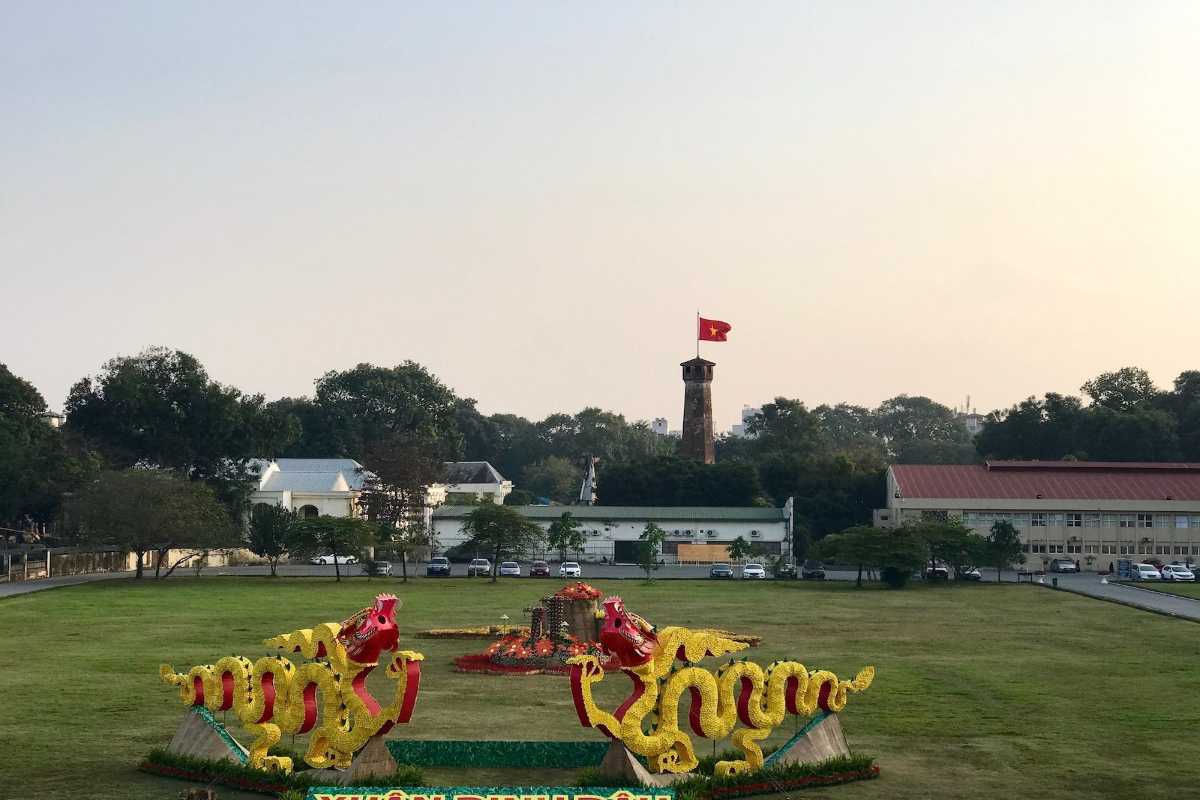
Travel Tips and Recommendations
To make the most of your visit to the Hanoi Flag Tower, practical advice and tailored recommendations can help you prepare effectively. By understanding the best times to visit, how to avoid crowds, and engaging responsibly with the site, you can ensure a smooth and rewarding experience.
Plan your visit with these tips in mind to enjoy every moment at the Hanoi Flag Tower.
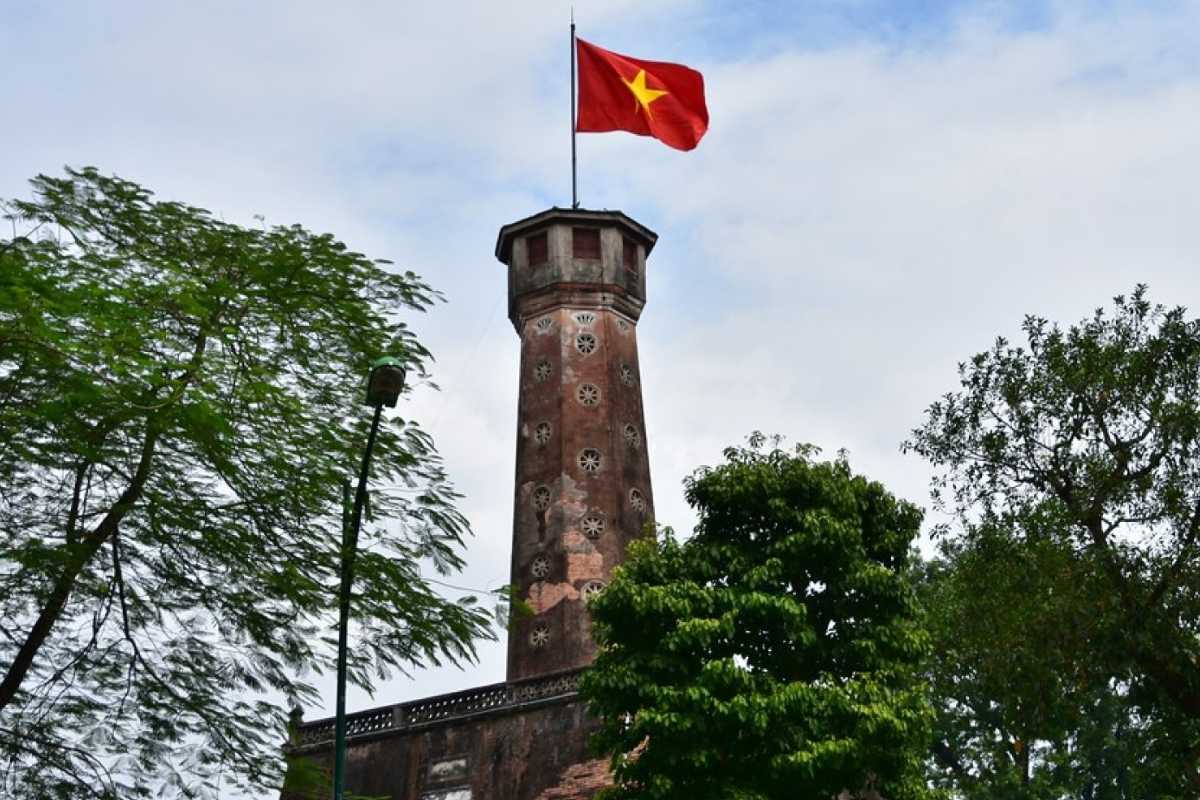
Best Time to Visit
Timing your visit to the Hanoi Flag Tower can greatly influence your experience. The dry season, from October to April, offers the most comfortable weather for exploring. Additionally, visiting during weekdays or early mornings helps you avoid crowds and enjoy a more peaceful atmosphere. These tips ensure maximum comfort and satisfaction during your trip.
Choose the right season and timing to get the best out of your visit.
Weather considerations: dry season (October–April) preferred
The dry season in Hanoi from October to April is the ideal period to visit the Hanoi Flag Tower due to:
- Lower rainfall and less humidity.
- Mild temperatures suitable for outdoor activities.
- Clear skies for better views and photos.
- More pleasant walking and climbing conditions.
Visiting during this season enhances your overall experience.
Avoiding crowds by visiting weekdays or early mornings
To enjoy a quieter visit at the Hanoi Flag Tower, consider these strategies:
- Visit on weekdays to avoid weekend crowds.
- Arrive early in the morning just after opening.
- Avoid public holidays and peak tourism dates.
- Use early visits for better photography and tranquility.
Planning your visit during these times improves your comfort and experience.
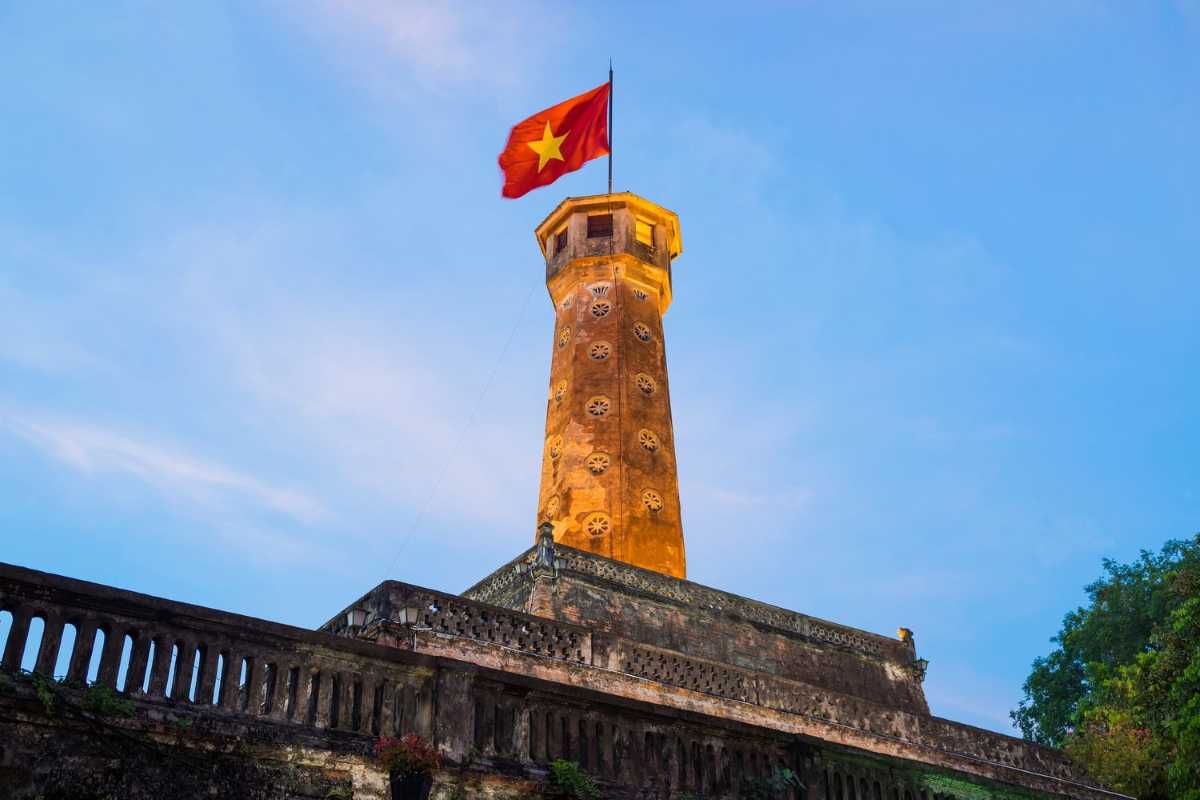
Visitor Preparation
Preparing well for your visit to the Hanoi Flag Tower ensures you stay comfortable and safe throughout your exploration. Knowing what to wear and what essentials to bring helps you enjoy the site without unnecessary hassle. This section provides practical advice to get you ready for the climb and the experience ahead.
Arrive prepared and make the most of your visit to the Hanoi Flag Tower.
Recommended clothing and footwear for climbing
Choosing the right clothing and footwear is important for a safe and comfortable visit:
- Lightweight, breathable clothes suitable for warm weather.
- Comfortable walking shoes with good grip for the spiral staircase.
- Avoid sandals or high heels to prevent slipping.
- Consider a hat or scarf for sun protection when outdoors.
Dressing appropriately helps you navigate the tower safely and enjoy your visit.
Essentials to bring: camera, water, sun protection
Packing these items will prepare you for a pleasant visit:
- Camera or smartphone for capturing panoramic views.
- Water bottle to stay hydrated, especially during warm months.
- Sunscreen and sunglasses to protect against sun exposure.
- Light snacks if you plan to spend extended time exploring.
Bringing these essentials ensures a comfortable and enjoyable visit to the Hanoi Flag Tower.

Tailored Tips for Different Visitors
Different visitors have unique interests and needs when visiting the Hanoi Flag Tower. Whether you’re coming with family, are a history enthusiast, or a casual tourist, these tailored tips help you plan an enjoyable and meaningful visit.
Find the best approach for your visit and maximize your experience at the Hanoi Flag Tower.
Families: combining Flag Tower with Hanoi Zoo visit
For families, combining a visit to the Hanoi Flag Tower with the nearby Hanoi Zoo offers an engaging day out for all ages. The zoo’s wide variety of animals and green spaces complement the historical experience, creating a balanced itinerary suitable for children and adults alike.
Plan a fun and educational family outing that covers history and nature.
History enthusiasts: guided tours and museum visits
History lovers can deepen their understanding by joining guided tours at the Hanoi Flag Tower and visiting nearby museums. Popular options include specialized history tours and explorations of cultural exhibits to enrich your appreciation of Vietnam’s heritage.
Choose from various tours to enhance your cultural insights.
Casual tourists: walking routes and photo spots
Casual visitors looking for leisurely exploration will enjoy scenic walking routes around the Hanoi Flag Tower and excellent photo spots. These paths allow for relaxed pacing while capturing the tower’s impressive architecture and nearby greenery.
Discover easy routes to enjoy and photograph the site.

Enhancing the Experience
To make your visit to the Hanoi Flag Tower truly memorable, consider enriching your experience by hiring local guides and exploring the vibrant cultural neighborhoods nearby. These options provide deeper insights into the history and culture, turning a simple visit into an immersive journey.
Discover how to connect with the local heritage and get the most from your trip.
Using local guides for in-depth knowledge
Hiring local guides offers several benefits:
- Access to expert stories and hidden facts about the Hanoi Flag Tower.
- Personalized tours tailored to your interests and pace.
- Enhanced understanding of Vietnamese culture and history.
- Opportunity to ask questions and engage deeply with the site.
Local guides can transform your visit into a rich educational experience.
Exploring surrounding parks and cultural neighborhoods
Beyond the tower, explore these nearby attractions:
- Green parks perfect for relaxing after the visit.
- Historic neighborhoods showcasing traditional architecture and local life.
- Cafes and street food spots offering authentic Vietnamese flavors.
- Cultural centers and galleries highlighting Hanoi’s art scene.
Venturing into these areas gives you a fuller appreciation of Hanoi’s vibrant culture.

Sustainability and Responsible Tourism
Supporting sustainable tourism at the Hanoi Flag Tower helps preserve its beauty and cultural value for future generations. Practicing responsible visitor behavior contributes to conservation and respects the local community.
Learn how to enjoy the site while protecting its heritage.
Following conservation rules and minimizing environmental impact
To protect the Hanoi Flag Tower and its surroundings, follow these key guidelines:
- Avoid littering and dispose of waste properly.
- Stay on designated paths to prevent damage to historic areas.
- Do not remove or deface any part of the site.
- Use eco-friendly products and minimize plastic use.
- Respect quiet zones to maintain the site's atmosphere.
These steps help minimize environmental impact during your visit.
Supporting local businesses and cultural initiatives
Visitors can positively impact the community by:
- Purchasing souvenirs and crafts from local vendors.
- Dining at nearby cafes that serve traditional Vietnamese cuisine.
- Participating in cultural programs or workshops.
- Promoting awareness of Vietnam’s cultural heritage through respectful tourism.
Supporting local initiatives encourages sustainable development and preserves cultural identity.

Insider Tips and Unique Visitor Experiences
Discover exclusive insights and personal stories that make your visit to the Hanoi Flag Tower truly memorable. This section offers unique perspectives, up-to-date visitor information, and local expertise to deepen your connection with this cultural landmark.

Local Perspectives and Historical Insights
Gain authentic understanding through the eyes of local historians and cultural experts. Their stories reveal hidden historical layers and enrich your appreciation of the Hanoi Flag Tower. Visitors’ testimonials also provide heartfelt accounts of their experiences at this site.
Stories from local historians and cultural experts
Local historians share fascinating tales about the Hanoi Flag Tower, from its construction during the Nguyen Dynasty to its symbolic role through Vietnam’s history. Cultural experts offer insights into how the tower represents Hanoi’s resilience and identity, enriching visitors’ understanding beyond surface-level facts.
Visitor testimonials highlighting memorable moments
Visitors often recall moments that made their trip to the Hanoi Flag Tower unforgettable. These testimonials capture the awe inspired by panoramic views, the thrill of climbing the spiral staircase, and the emotional impact of witnessing national ceremonies. Their stories offer relatable perspectives for new visitors.

Lesser-Known Facts About Hanoi Flag Tower
Explore fascinating and lesser-known architectural and historical details about the Hanoi Flag Tower that most visitors miss. This section unveils hidden features and intriguing cultural stories, enriching your visit with deeper understanding.
Architectural details not commonly known
The Hanoi Flag Tower holds several unique architectural secrets, such as its three-tiered structure designed for both defense and visibility. Hidden chambers, specific materials used during the Nguyen Dynasty, and the intricacies of the spiral staircase highlight the tower’s innovative design that blends function with symbolism.
Historical anecdotes and symbolism behind flag ceremonies
Flag ceremonies at the Hanoi Flag Tower carry deep symbolic meanings tied to Vietnam’s history and national pride. Stories of how the tower’s flag was used during colonial resistance and wartime inspire respect and reflection. These ceremonies continue to represent unity and resilience for the Vietnamese people.

Recent Developments and Visitor Updates
Stay informed about the latest restorations, new visitor facilities, and upcoming events at the Hanoi Flag Tower. This section keeps you updated on improvements that enhance your experience and preserve the tower’s heritage.
Information on recent restorations and preservation efforts
The Hanoi Flag Tower has undergone significant restoration projects aimed at preserving its historical integrity and architectural beauty. Recent efforts by local authorities focus on structural repairs, material conservation, and protection against environmental damage to ensure this cultural landmark endures for future generations.
New facilities, events, or visitor services to be aware of
Visitors can now enjoy improved amenities such as upgraded visitor centers, informative signage, and enhanced accessibility options at the Hanoi Flag Tower. Additionally, new cultural events and educational programs are regularly scheduled to enrich the visitor experience throughout the year.

Conclusion
The Hanoi Flag Tower stands as a proud symbol of Vietnam’s rich cultural heritage and historical resilience. This iconic landmark offers visitors a unique blend of architectural beauty, historical significance, and vibrant cultural experiences.
From climbing the tower to enjoy panoramic views, to exploring nearby museums and heritage sites, there is much to discover at and around the Hanoi Flag Tower. Practical visitor tips and essential information ensure you can plan your trip smoothly and make the most of your visit.
When visiting Hanoi, be sure to include the Hanoi Flag Tower in your itinerary to experience its timeless charm and national significance. For personalized travel support or itinerary planning, you can rely on Asia Travel Links—available via our website, email, or phone—to help create a memorable journey through Vietnam’s cultural landmarks.
Ready to explore the Hanoi Flag Tower? Let us assist you every step of the way.
Mike Nguyen
Travel Advisor
Mobile: +84917506881 (whatsapp available)
Email: contact@asiatravellinks.com
Faqs
The Hanoi Flag Tower is a historic landmark located in the heart of Hanoi, symbolizing Vietnam’s rich cultural heritage and national pride. It stands as a prominent feature of the Thang Long Imperial Citadel, reflecting centuries of history and architectural significance.
- Built in 1812 during the Nguyen Dynasty, the tower served as a military watchtower and defense point.
- It is one of the few structures in the citadel that was not destroyed during the French colonial period.
- The tower is famous for its large flag, which flies prominently over the city.
- It offers panoramic views of the surrounding Ba Dinh District.
- The Hanoi Flag Tower is part of a UNESCO World Heritage Site, emphasizing its cultural importance.
Visiting the Hanoi Flag Tower offers a unique glimpse into Vietnam’s history and architectural mastery. Plan your visit to explore this iconic symbol of Vietnamese resilience and pride.
Getting to the Hanoi Flag Tower is convenient due to its central location in Ba Dinh District, Hanoi. Visitors can choose from several transport options to reach this historic site.
- Public buses serve routes passing near the tower with stops in Ba Dinh District.
- Taxis and ride-hailing services are widely available and provide flexible transport.
- Walking is possible for those staying nearby or exploring the old quarter.
- Cycling offers a scenic and eco-friendly way to reach the tower, with bike rentals accessible around Hanoi.
- The tower is well-signposted and easily found on local maps.
Understanding your transportation options helps ensure a smooth visit. Whether you prefer public transit or a private ride, reaching the Hanoi Flag Tower is straightforward and hassle-free.
Visiting the Hanoi Flag Tower is generally free of charge, allowing all travelers easy access to this iconic landmark.
- Entry to the tower and the immediate surrounding area does not require a ticket.
- Some nearby museums within the Thang Long Imperial Citadel complex may charge admission fees.
- It’s advisable to check for any seasonal changes or special event fees before visiting.
- Free access helps promote public engagement with Vietnamese heritage sites.
- Donations or contributions for preservation are occasionally welcomed but not mandatory.
Enjoy the opportunity to visit the Hanoi Flag Tower without an entry fee, making it an accessible stop for all visitors exploring Hanoi.
The Hanoi Flag Tower is accessible to the public during standard daylight hours, aligning with the general visiting times for heritage sites in Hanoi.
- Typical opening hours range from early morning until late afternoon, often 7:00 AM to 5:00 PM.
- Opening times may vary slightly depending on the season or local events.
- Visitors should plan to arrive before closing to fully enjoy the site.
- Some special ceremonies or events may alter public access temporarily.
- It is best to confirm hours ahead of your visit to avoid inconvenience.
Visiting within these hours ensures a full experience of the Hanoi Flag Tower and its surroundings.





